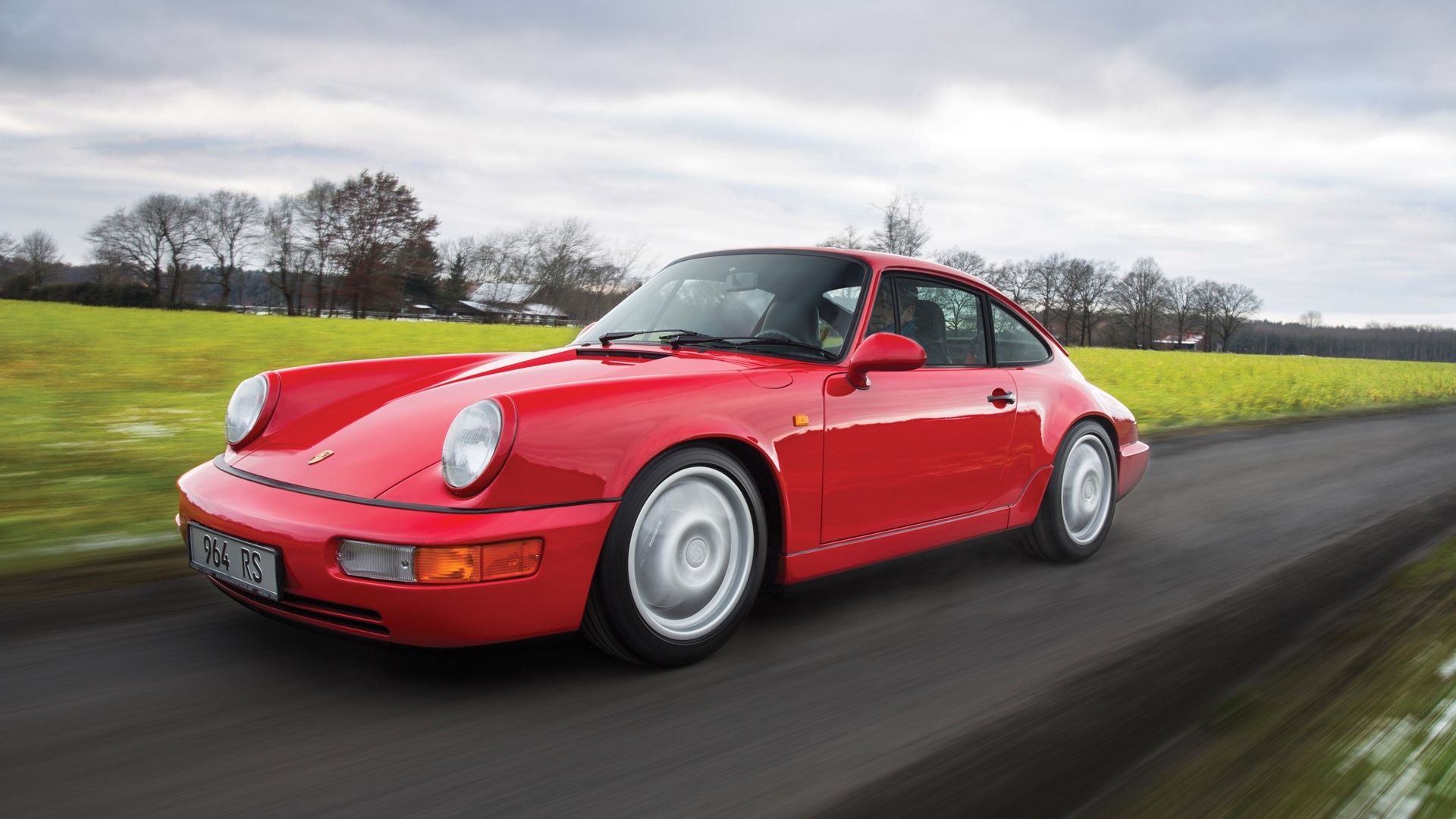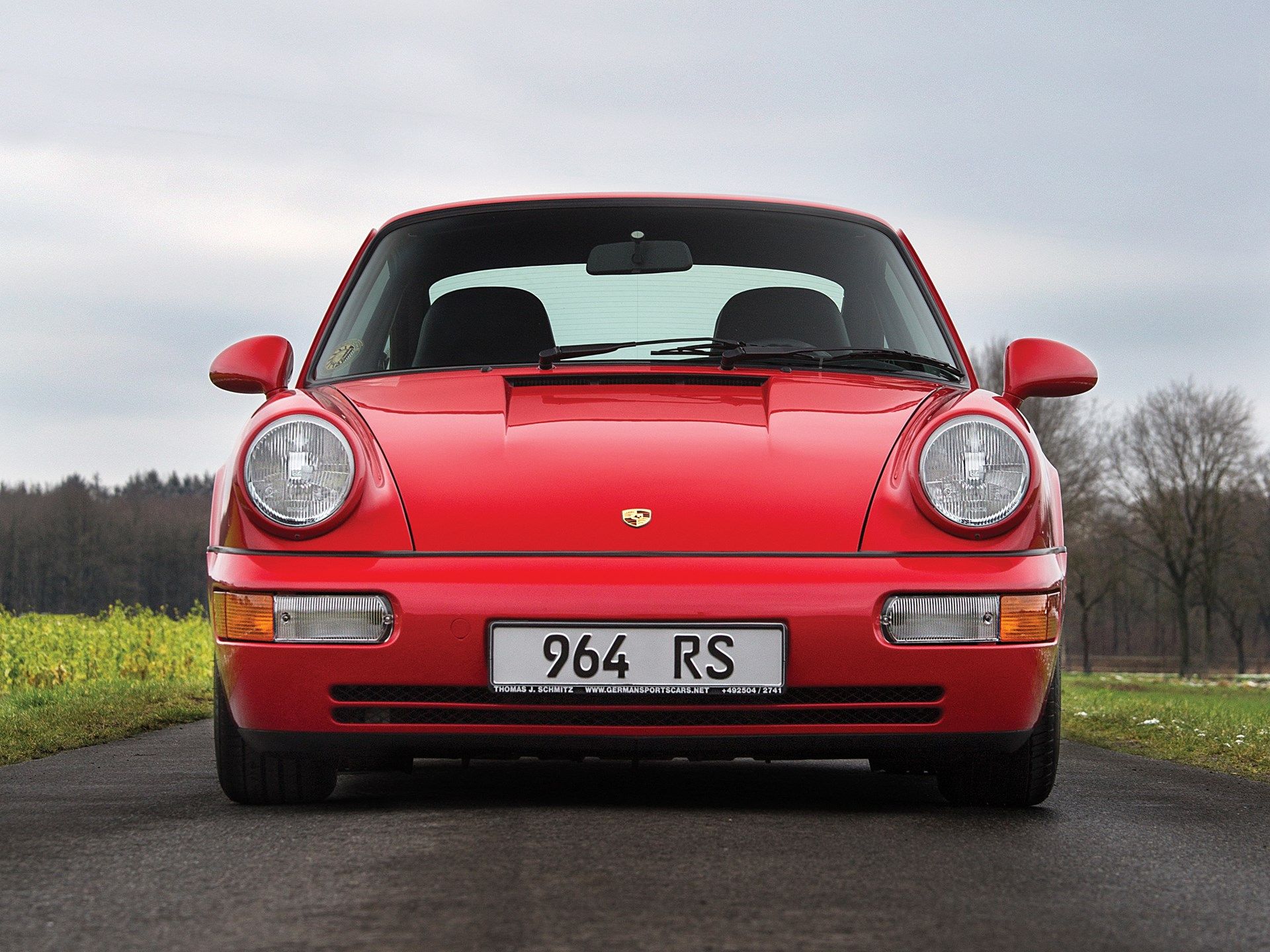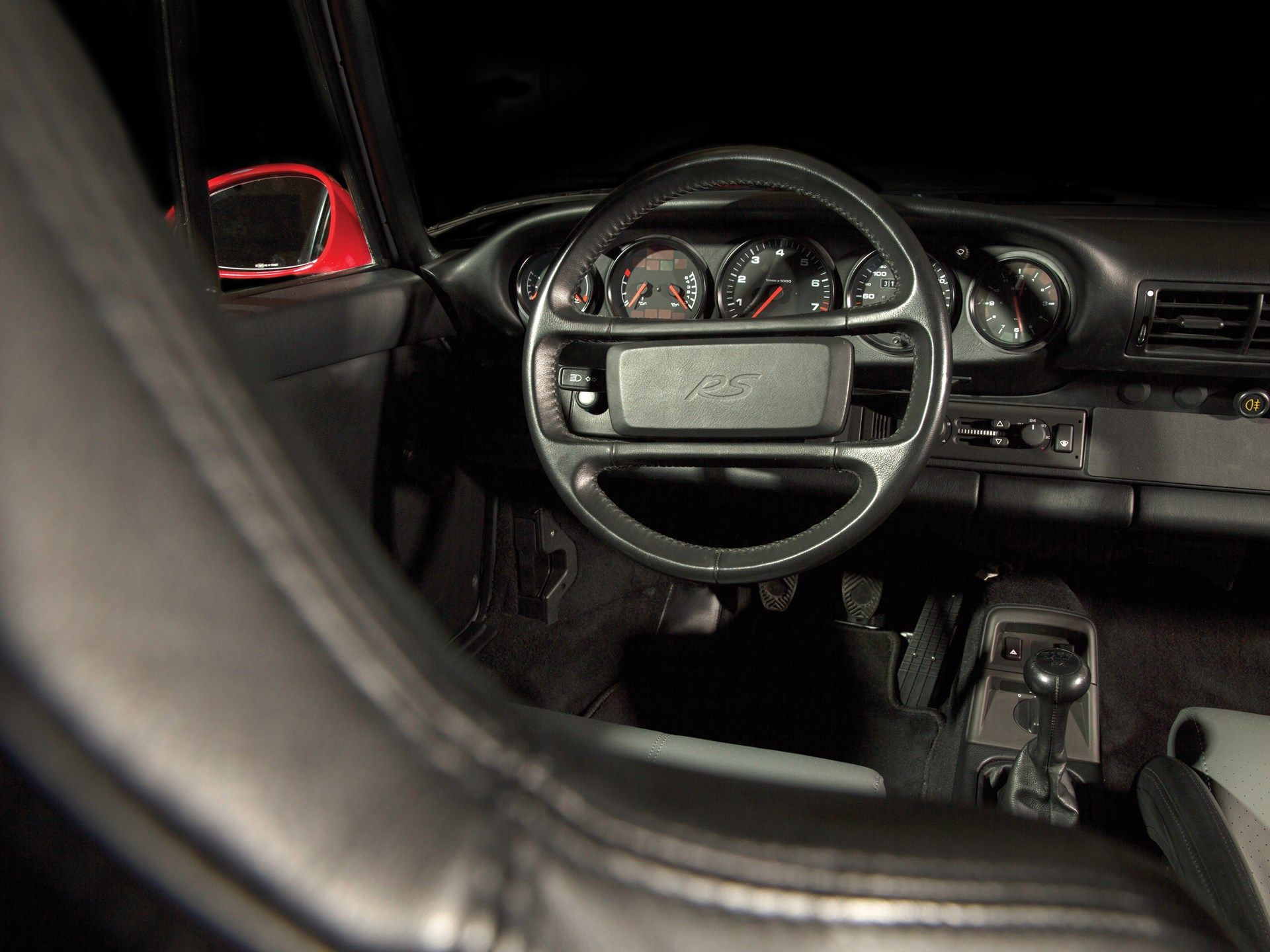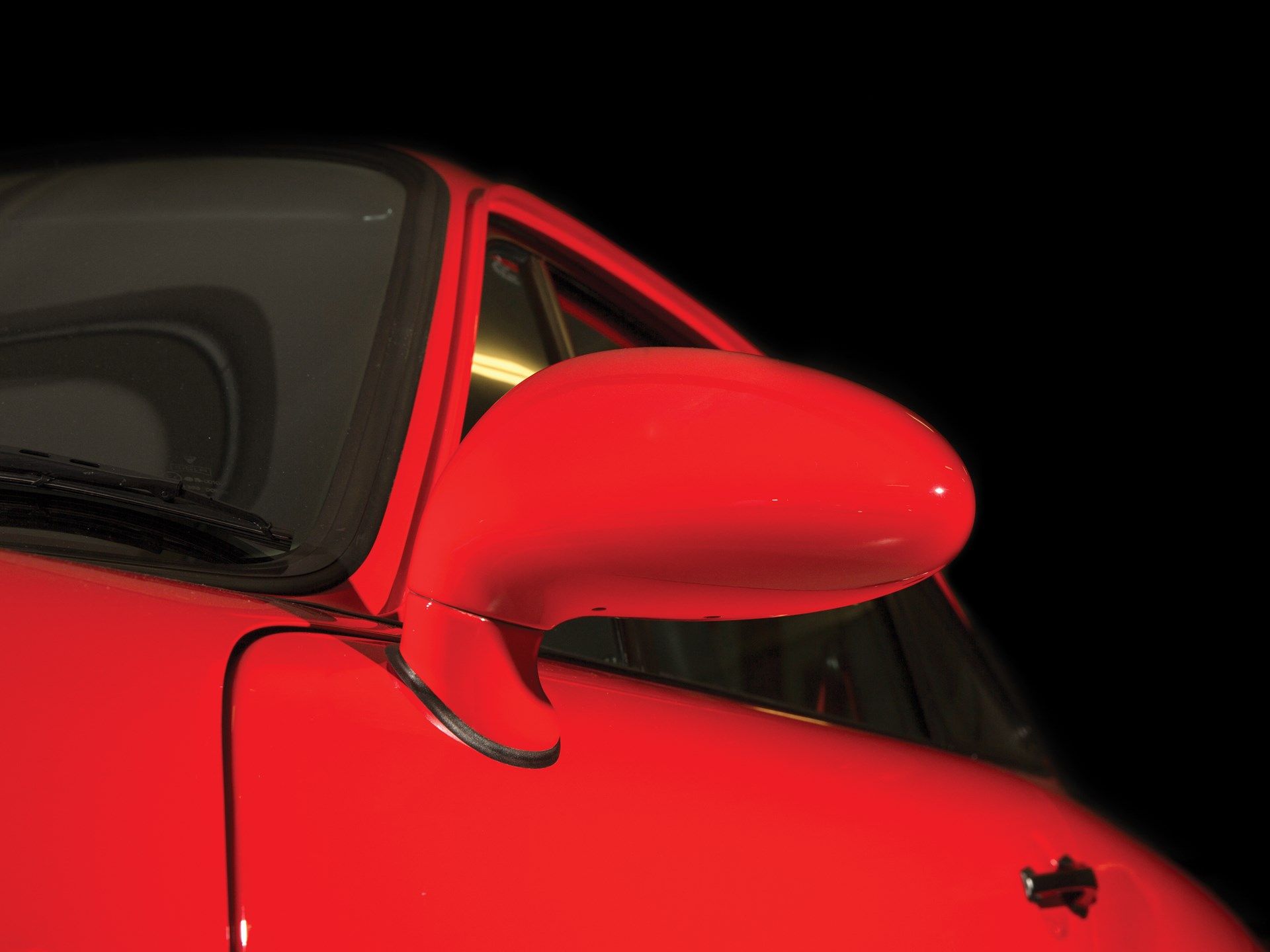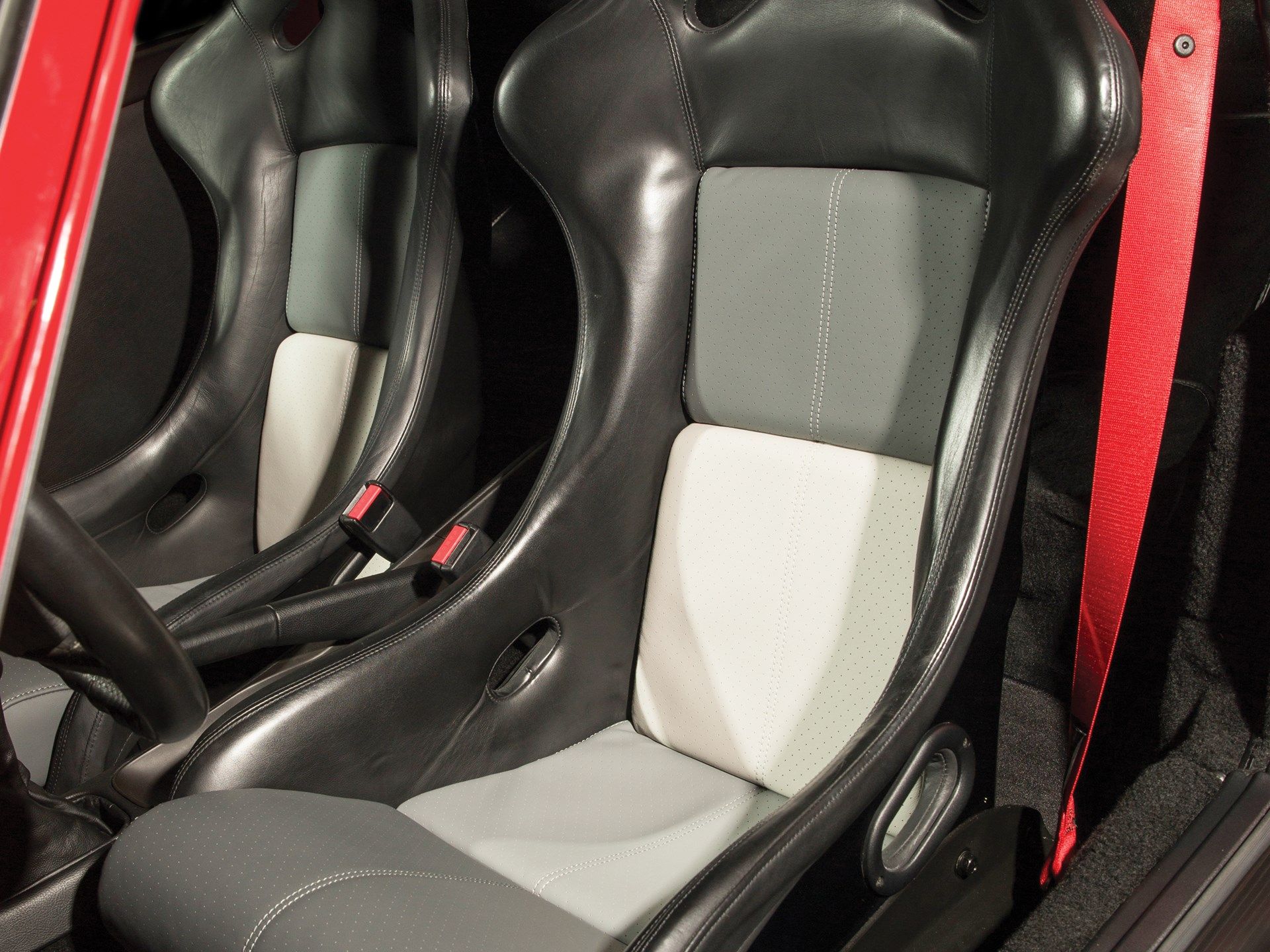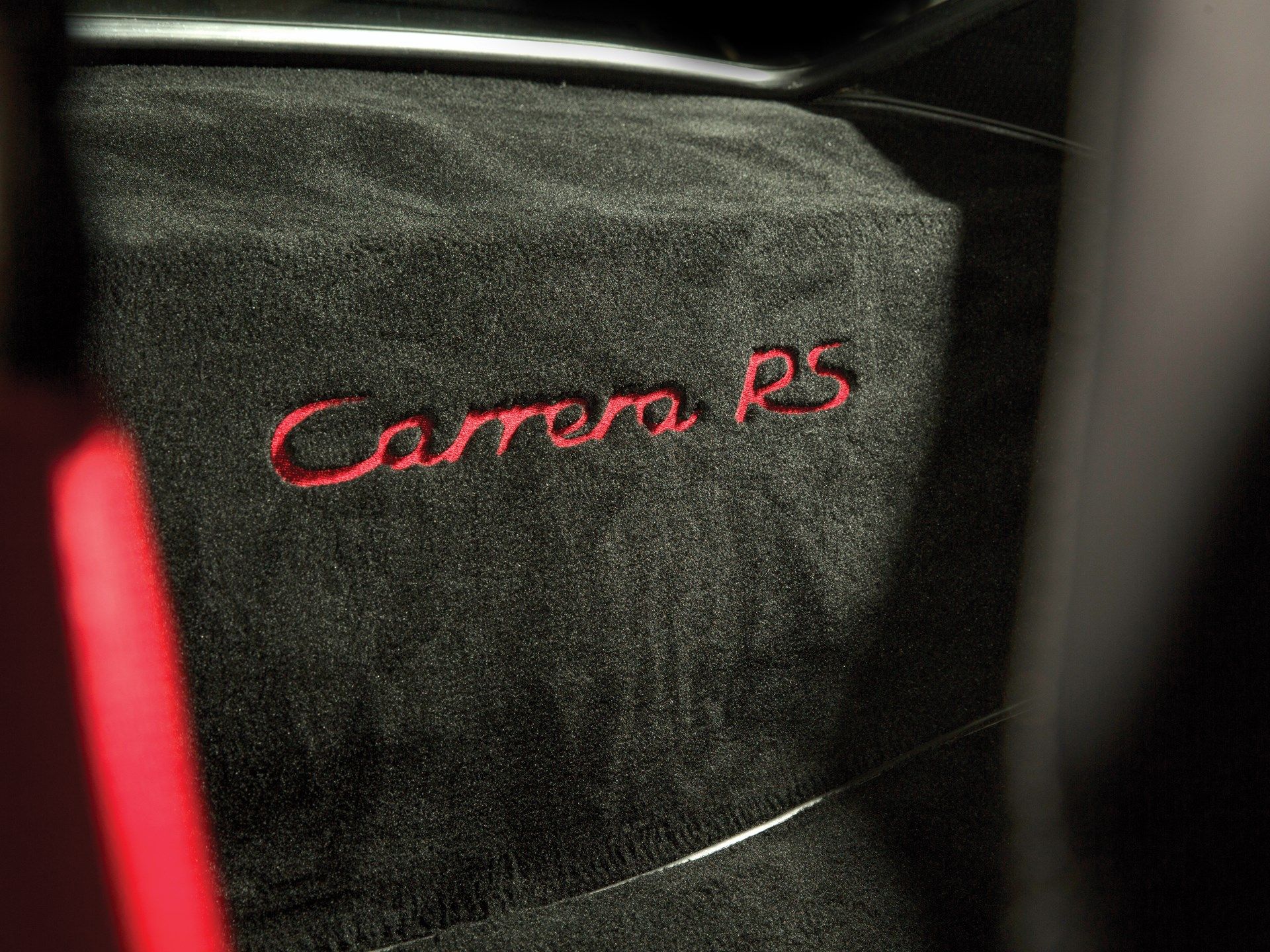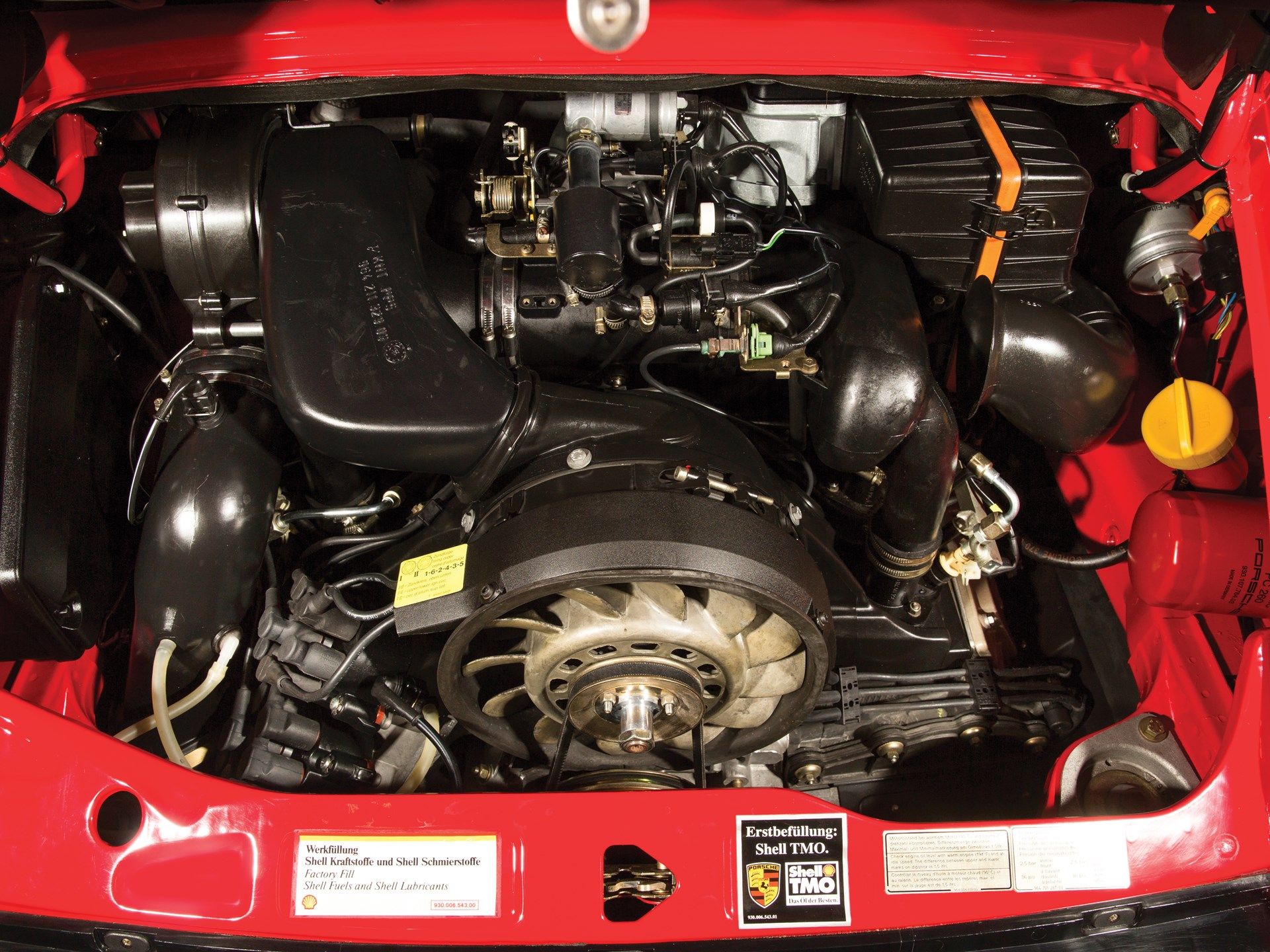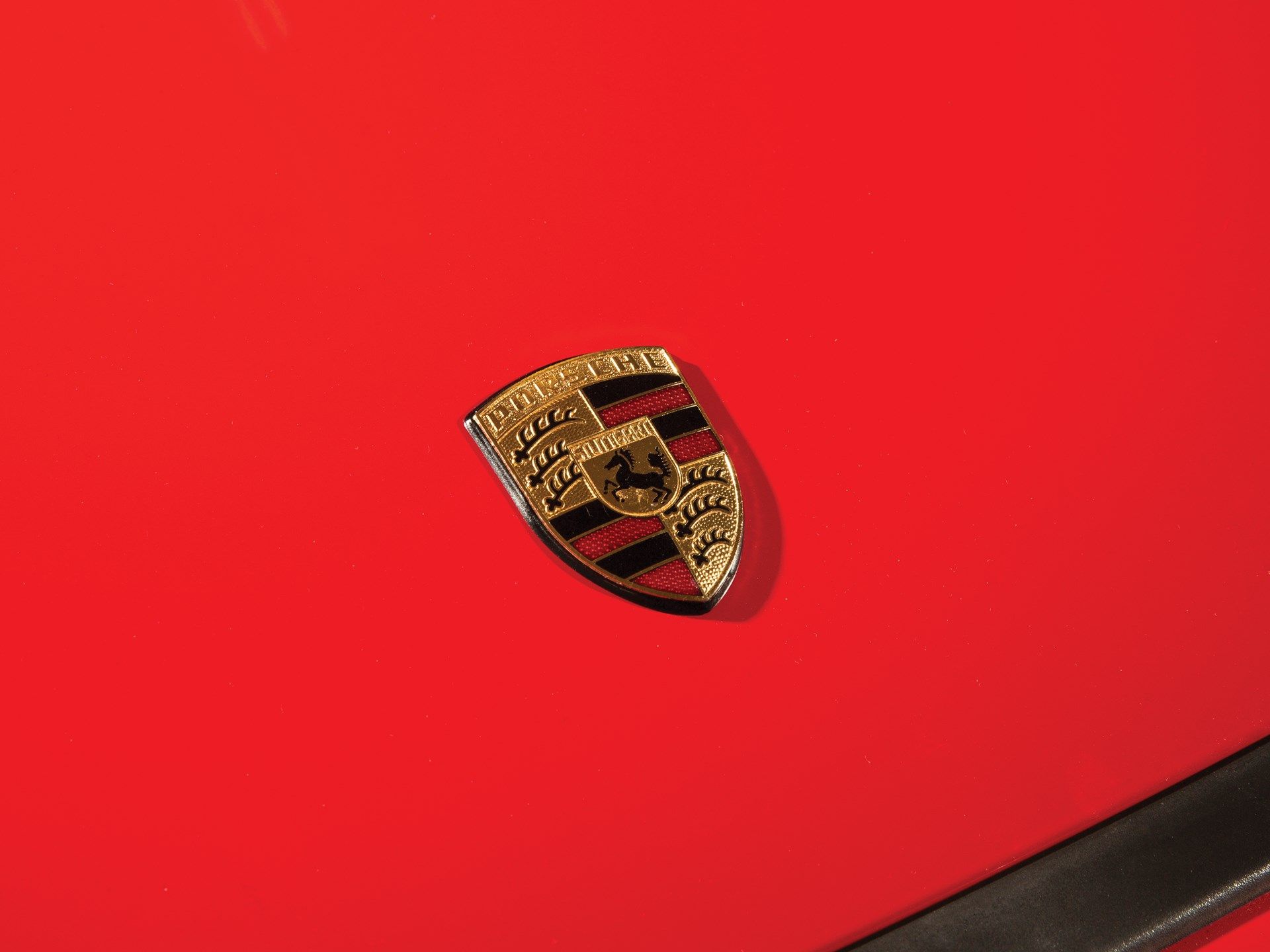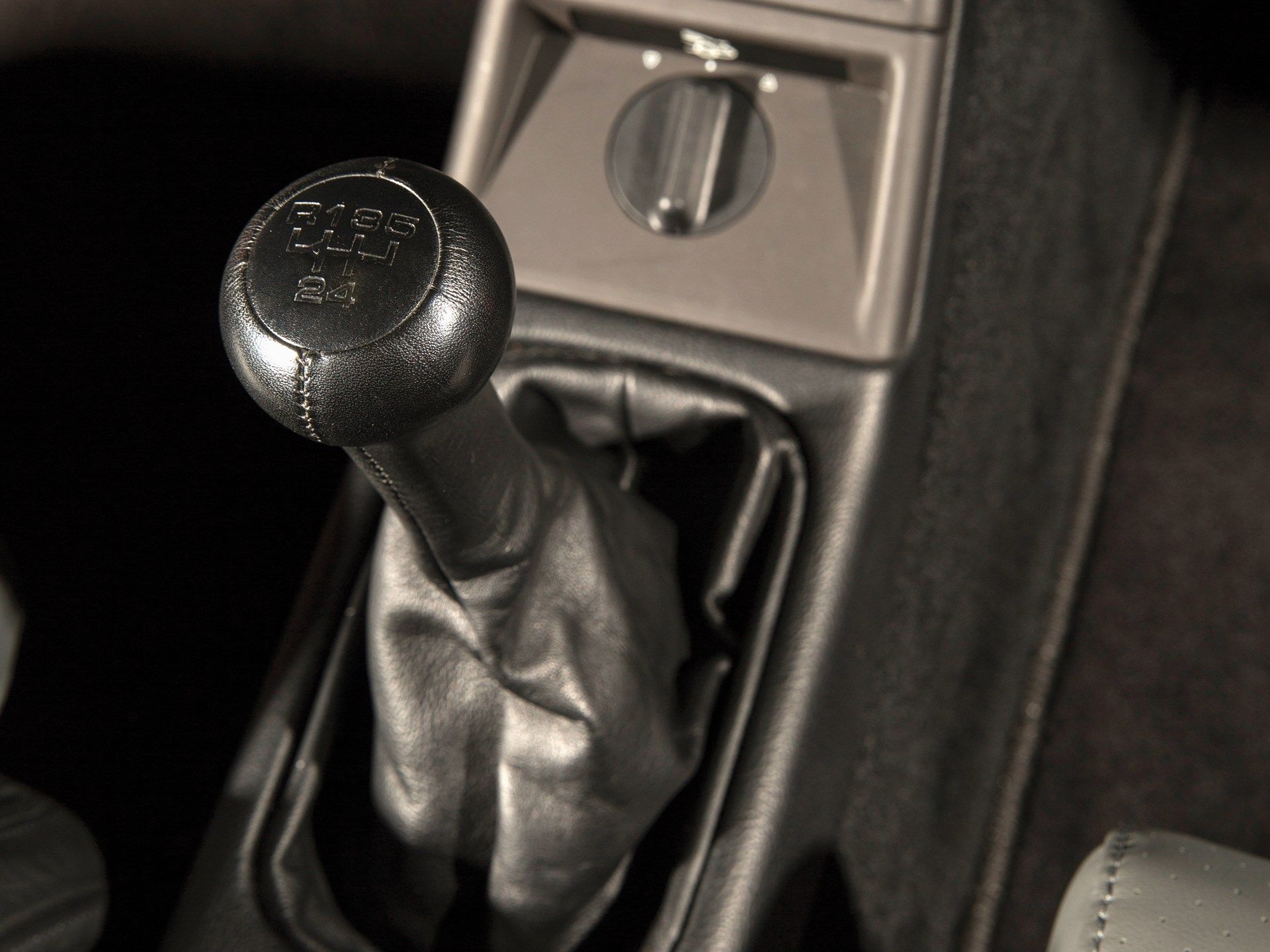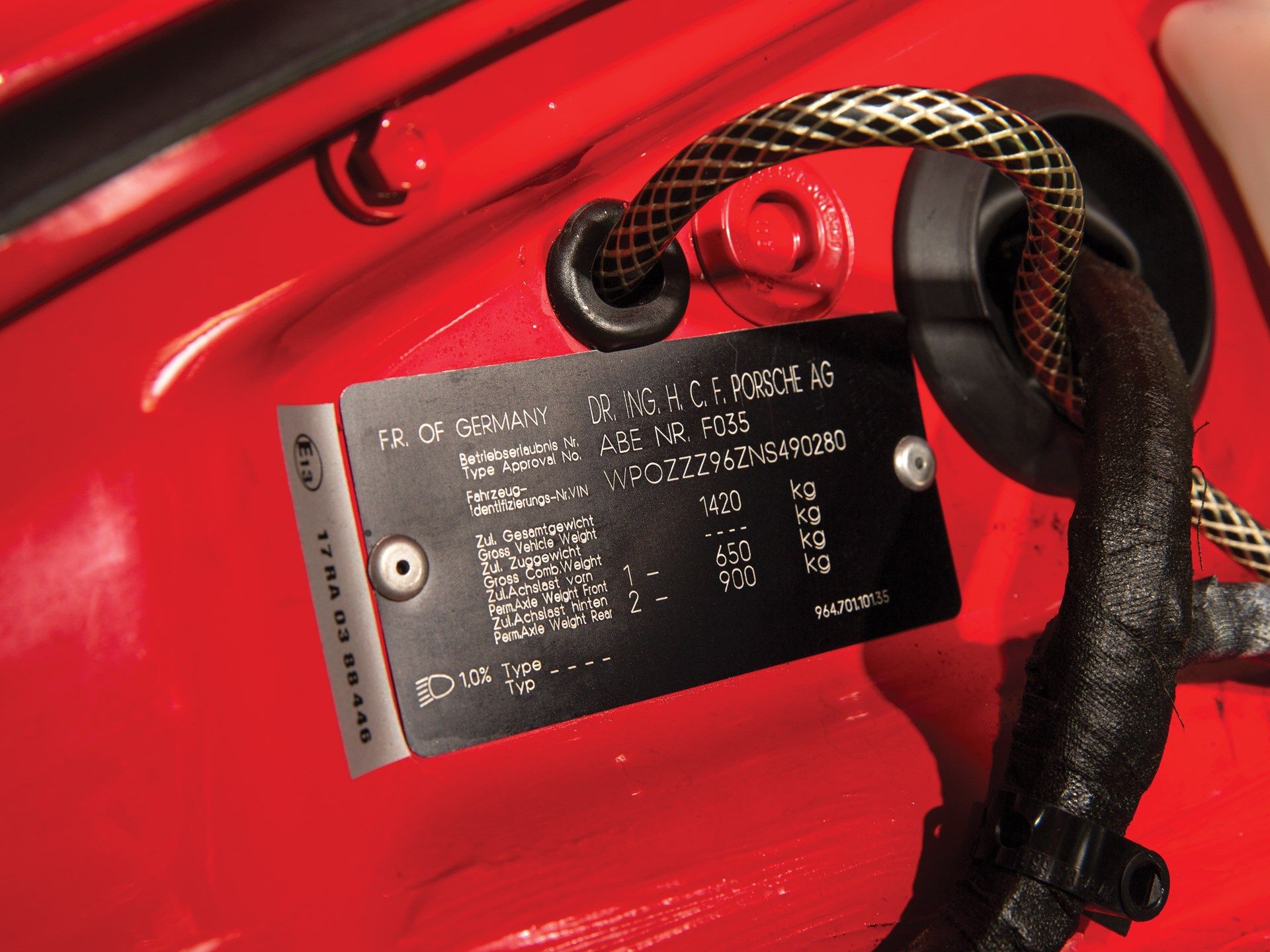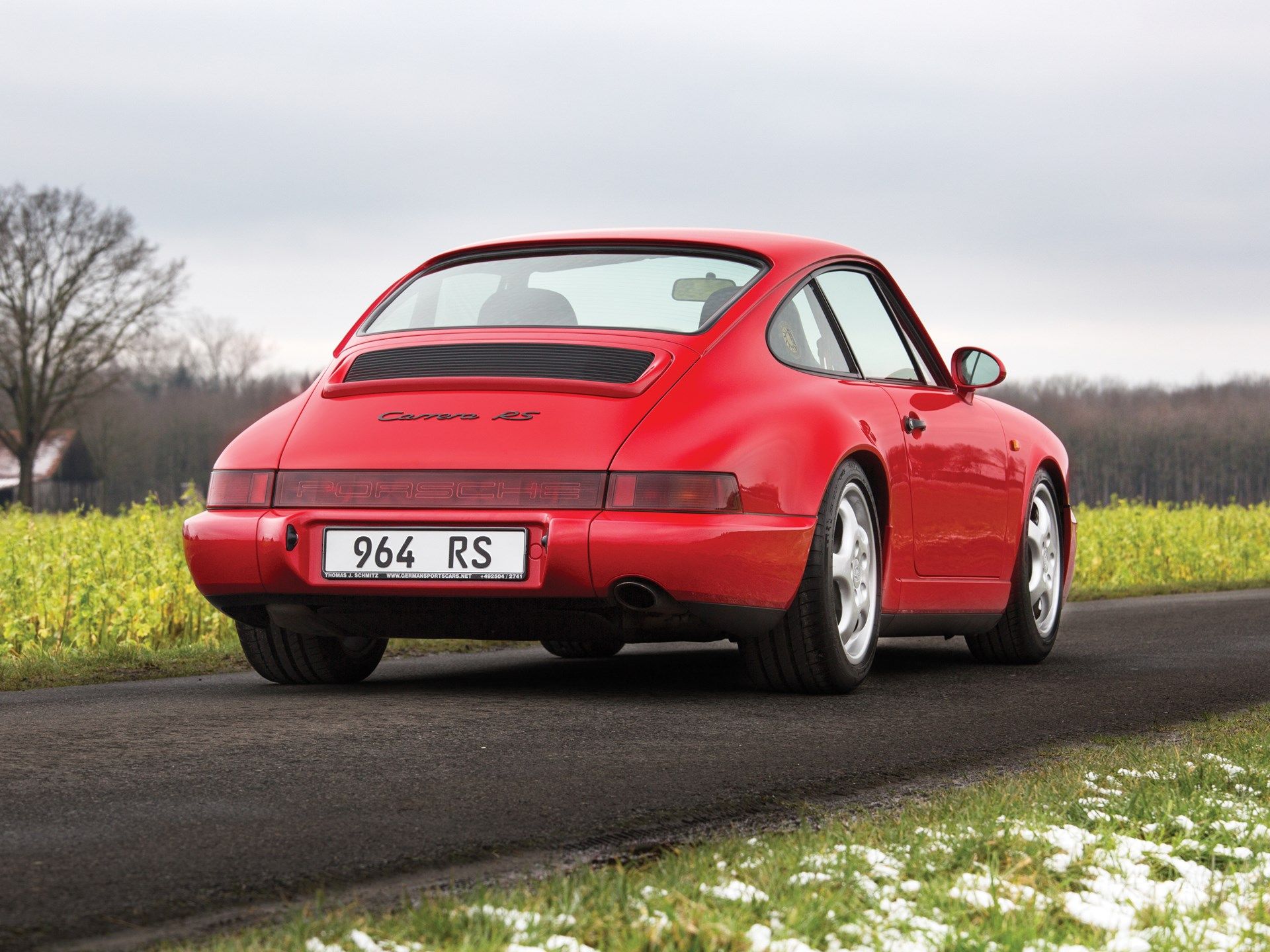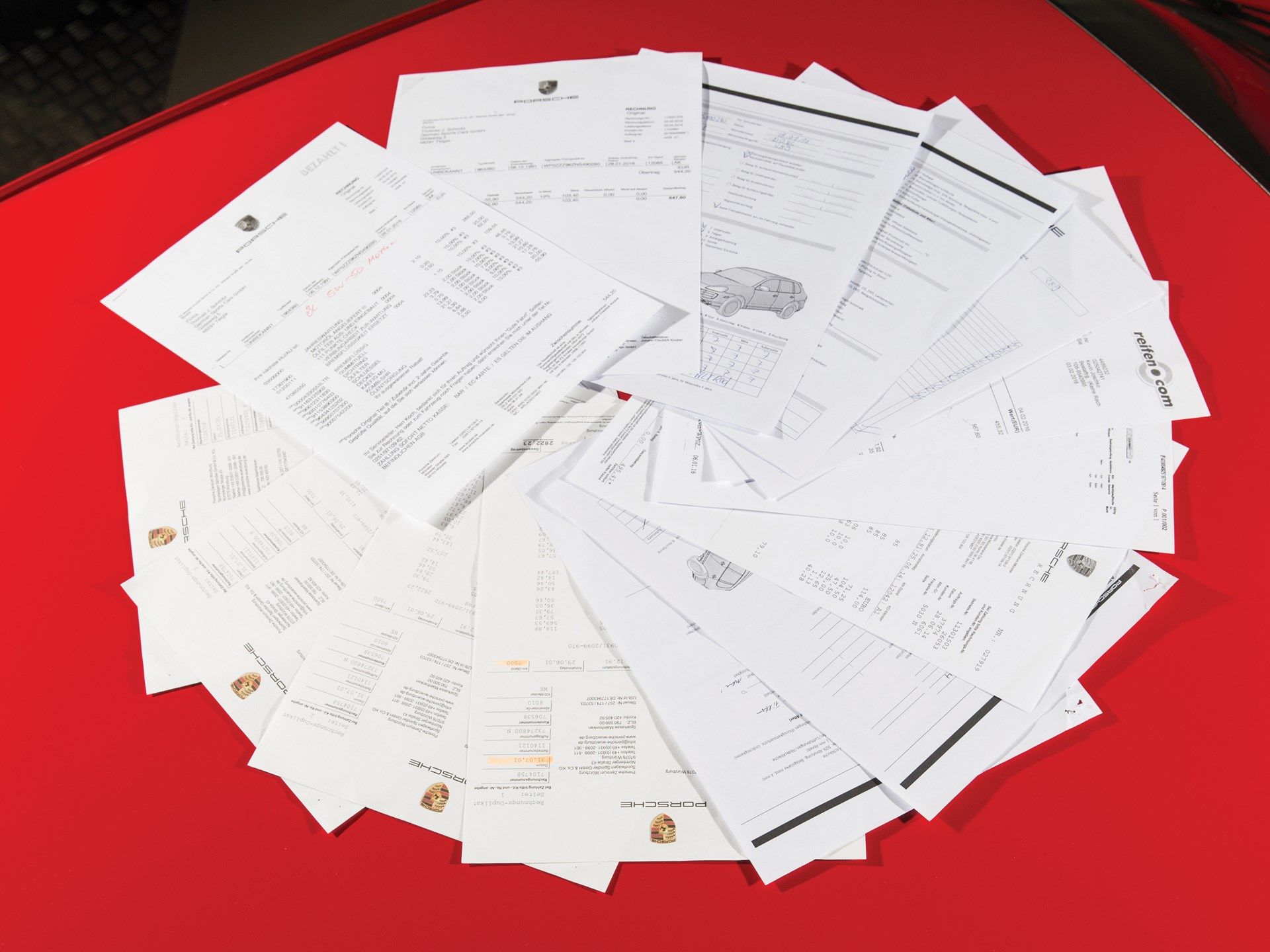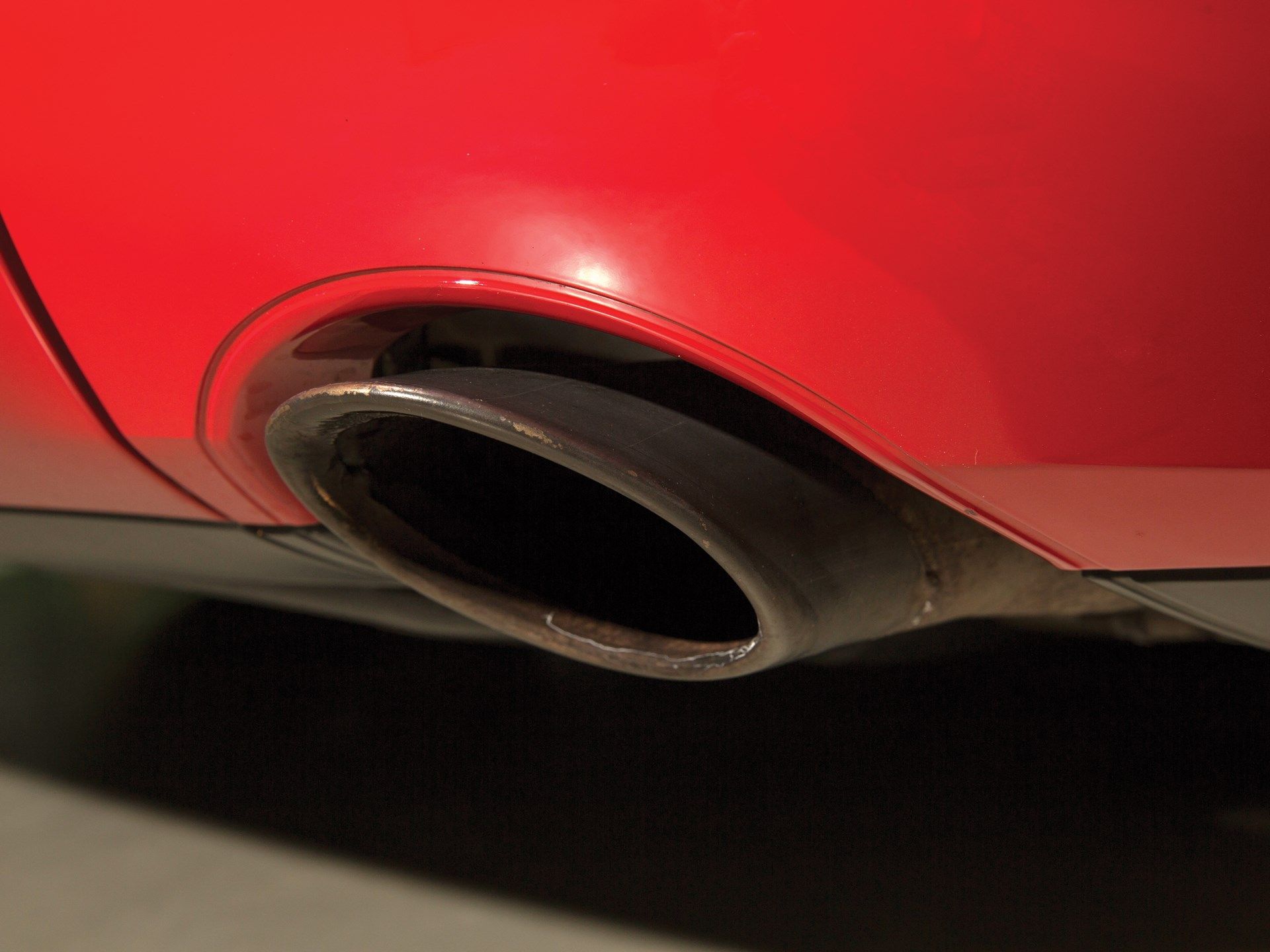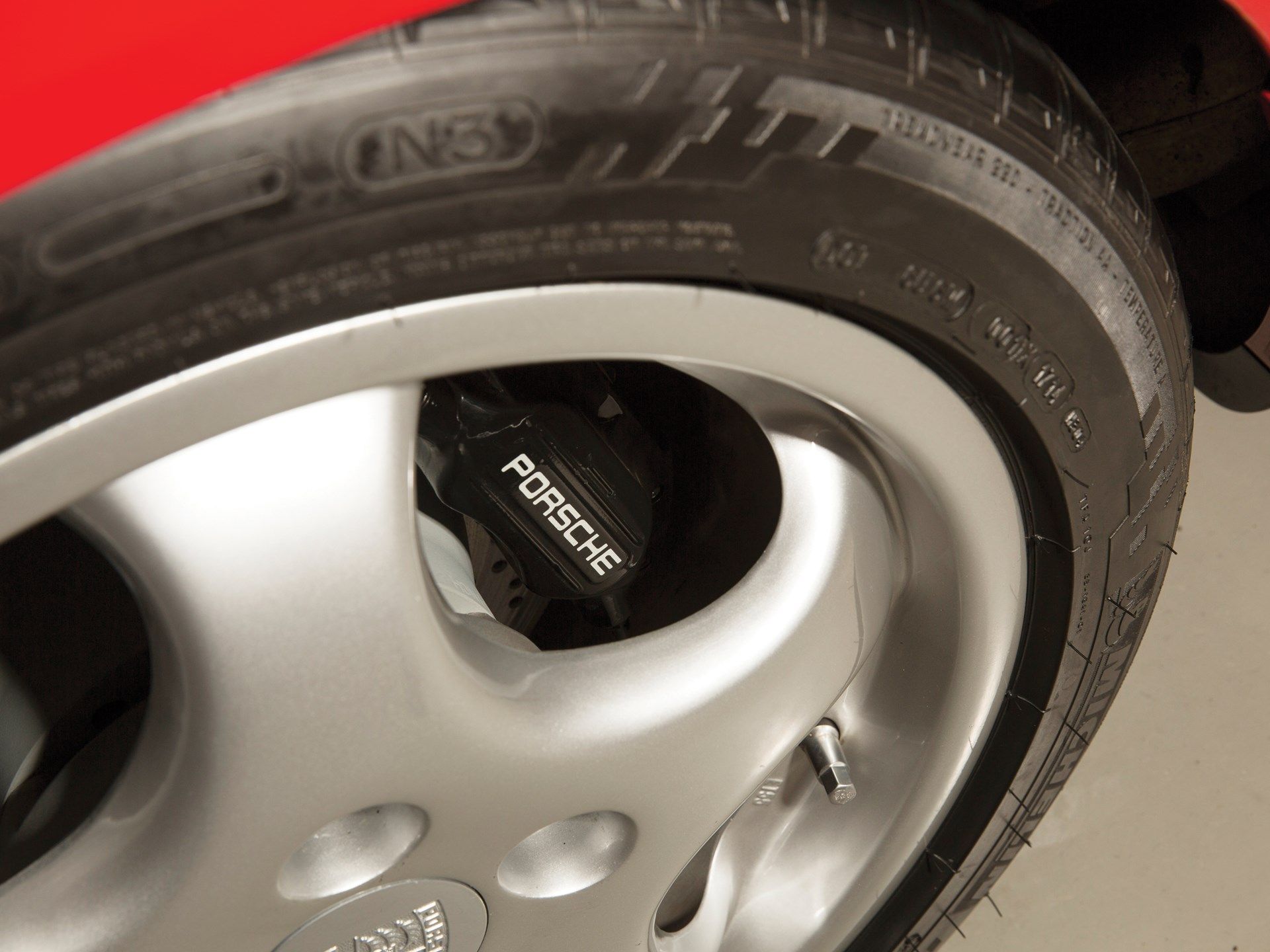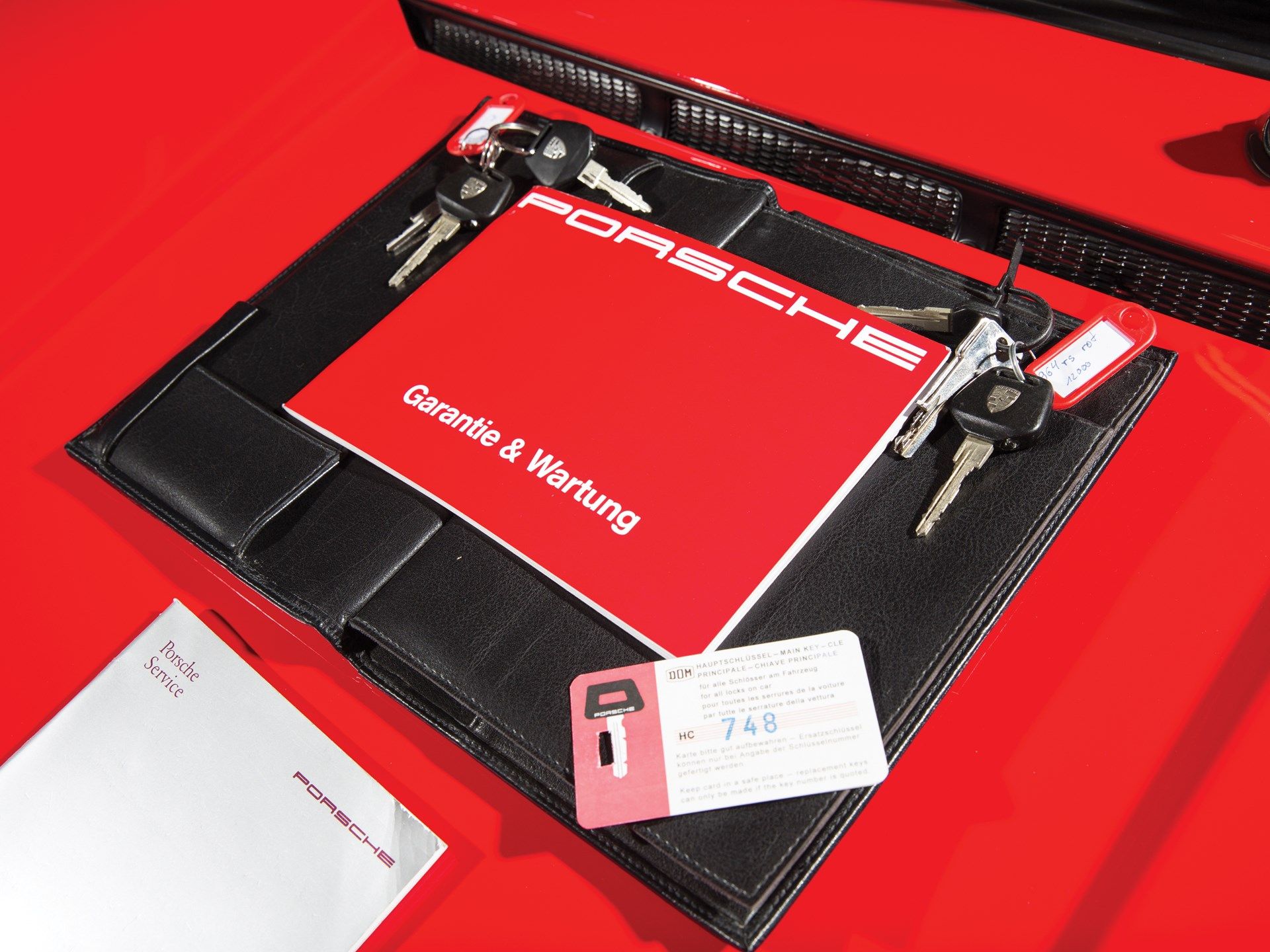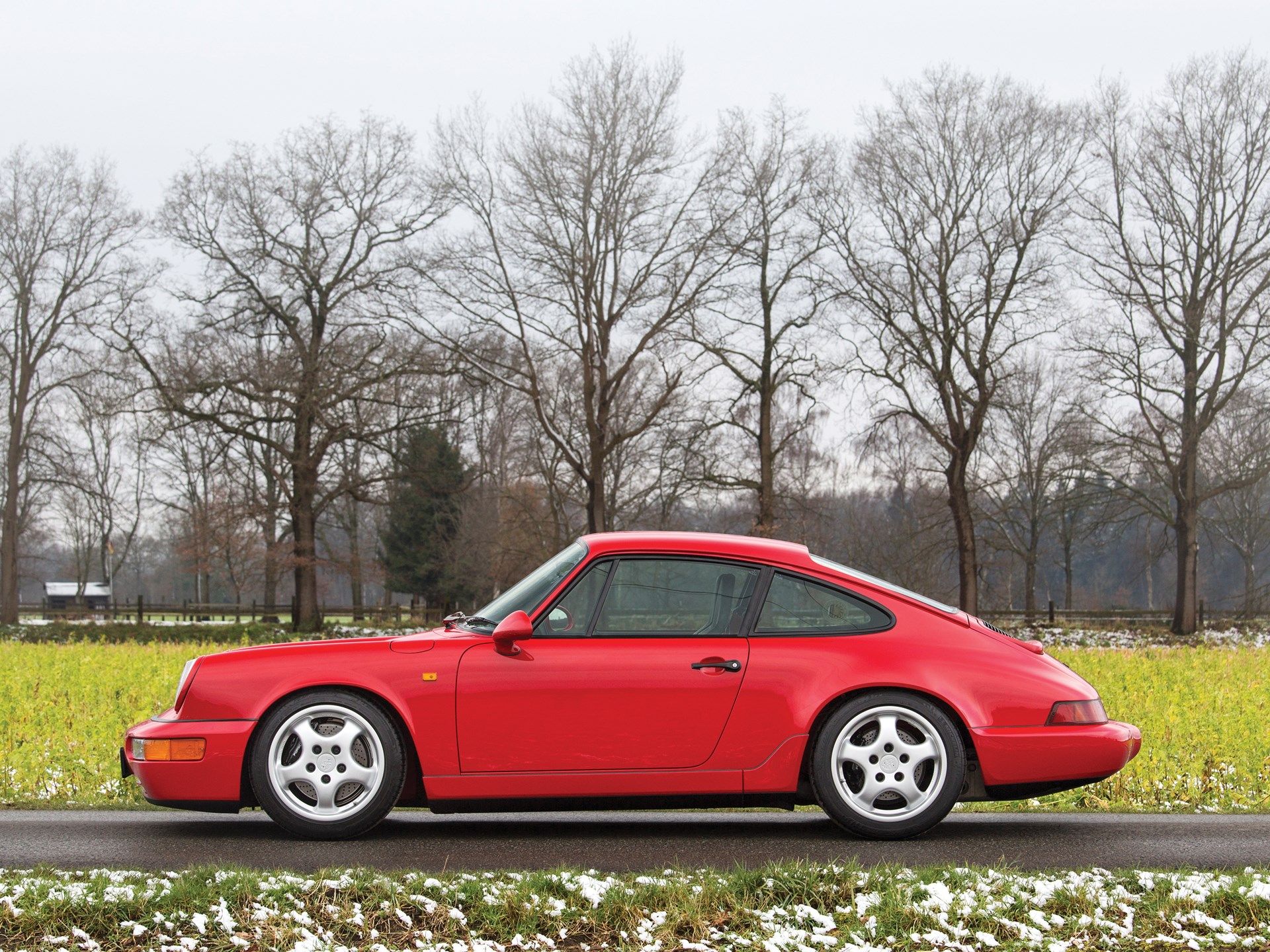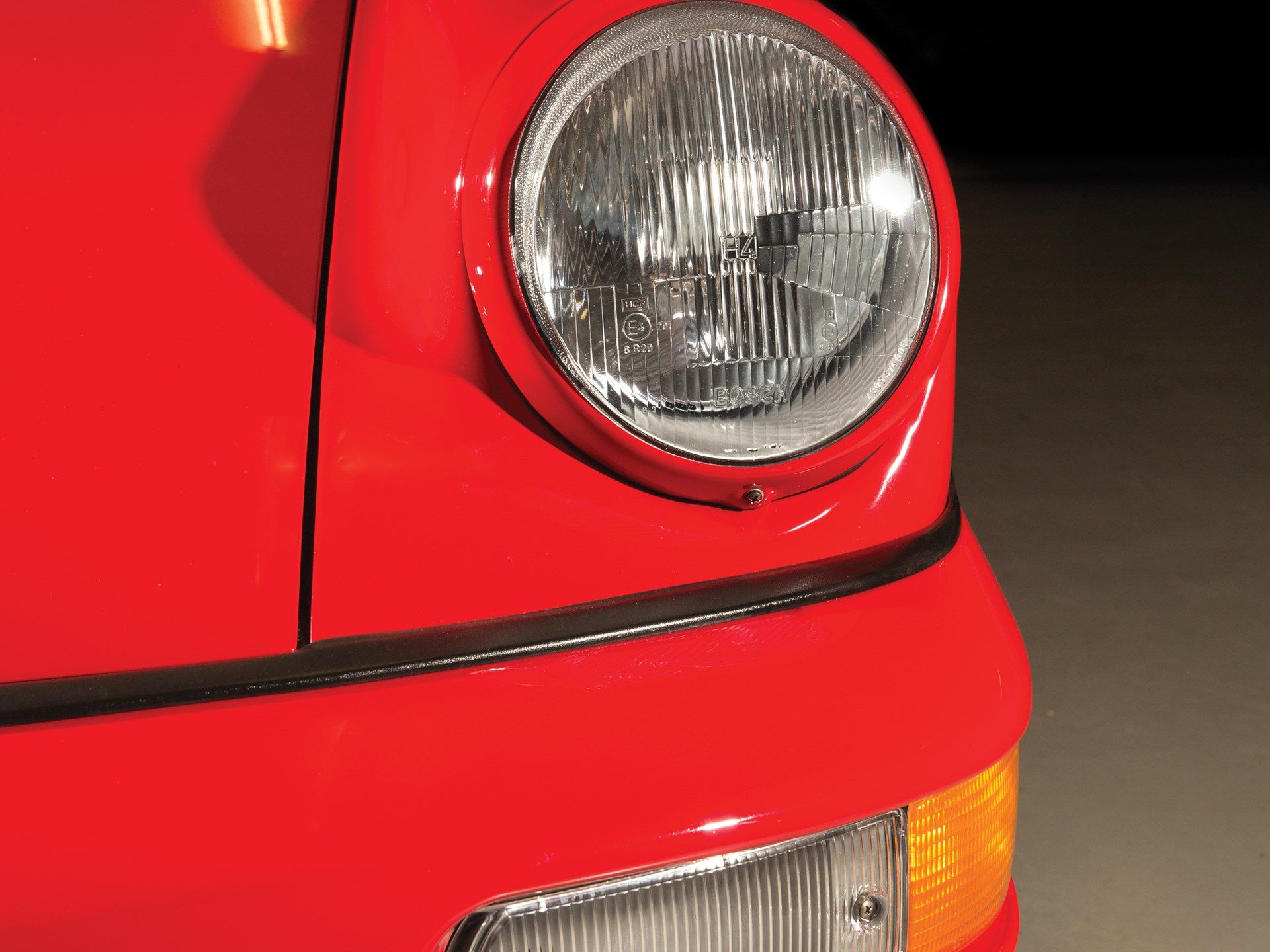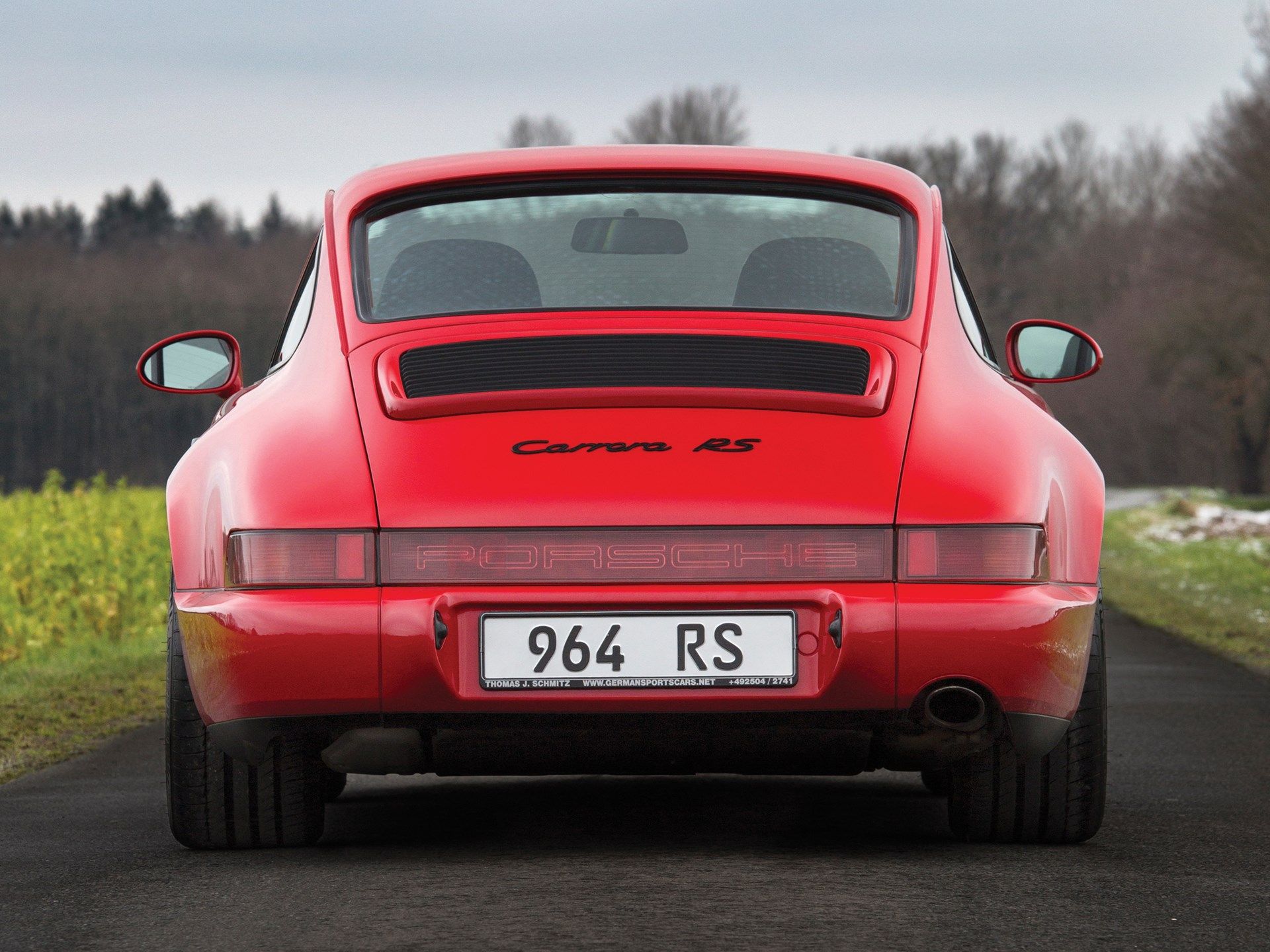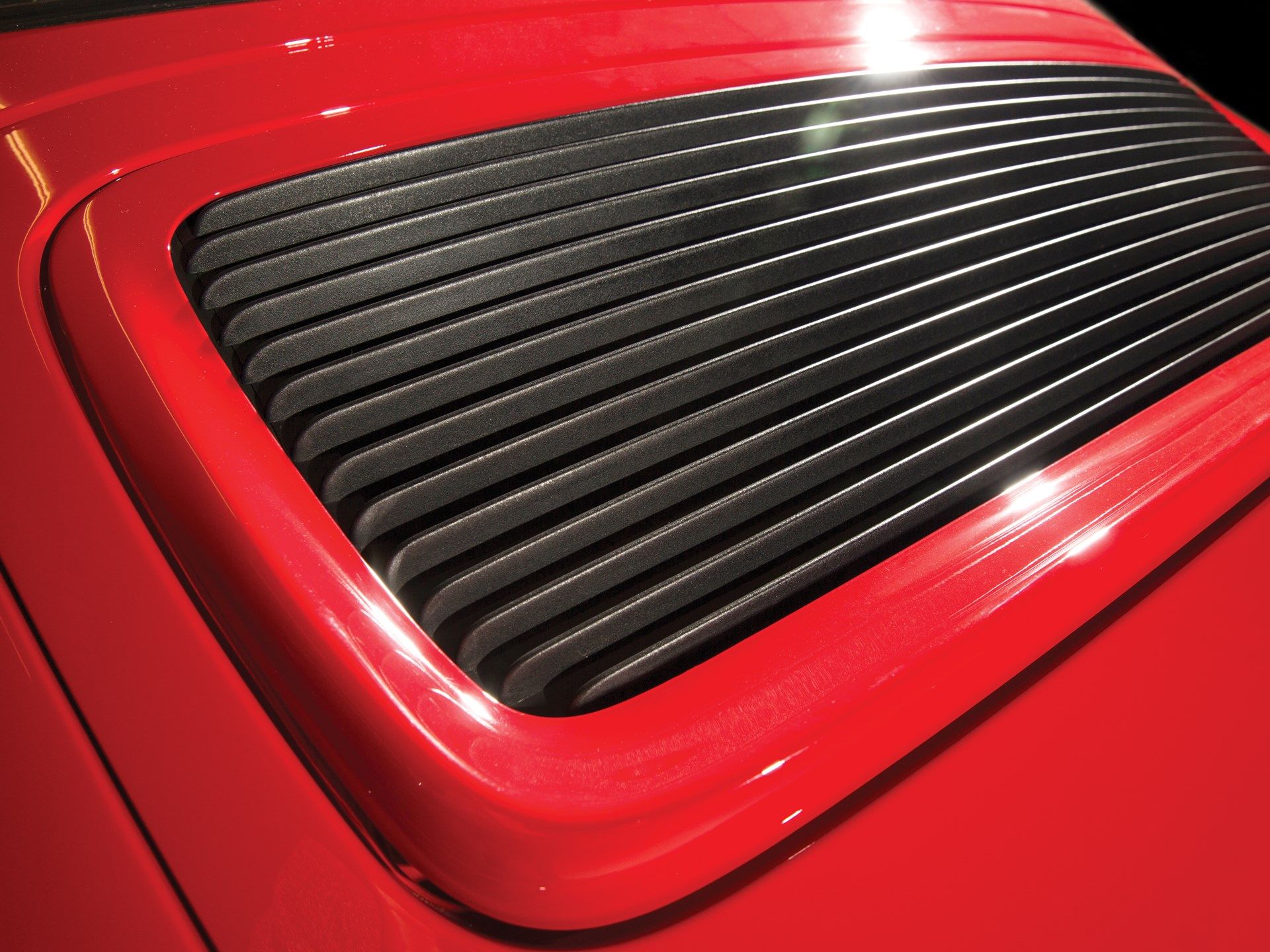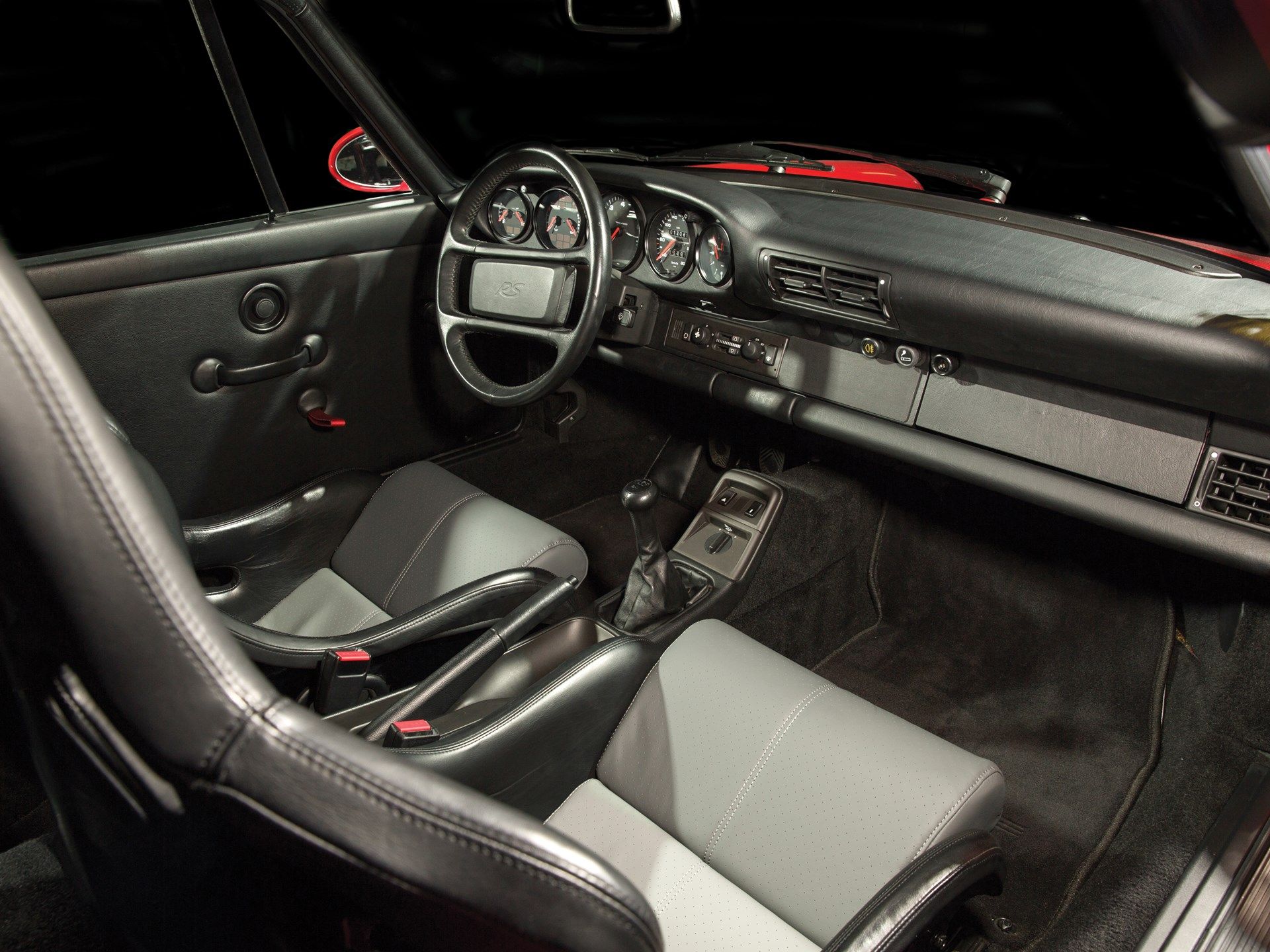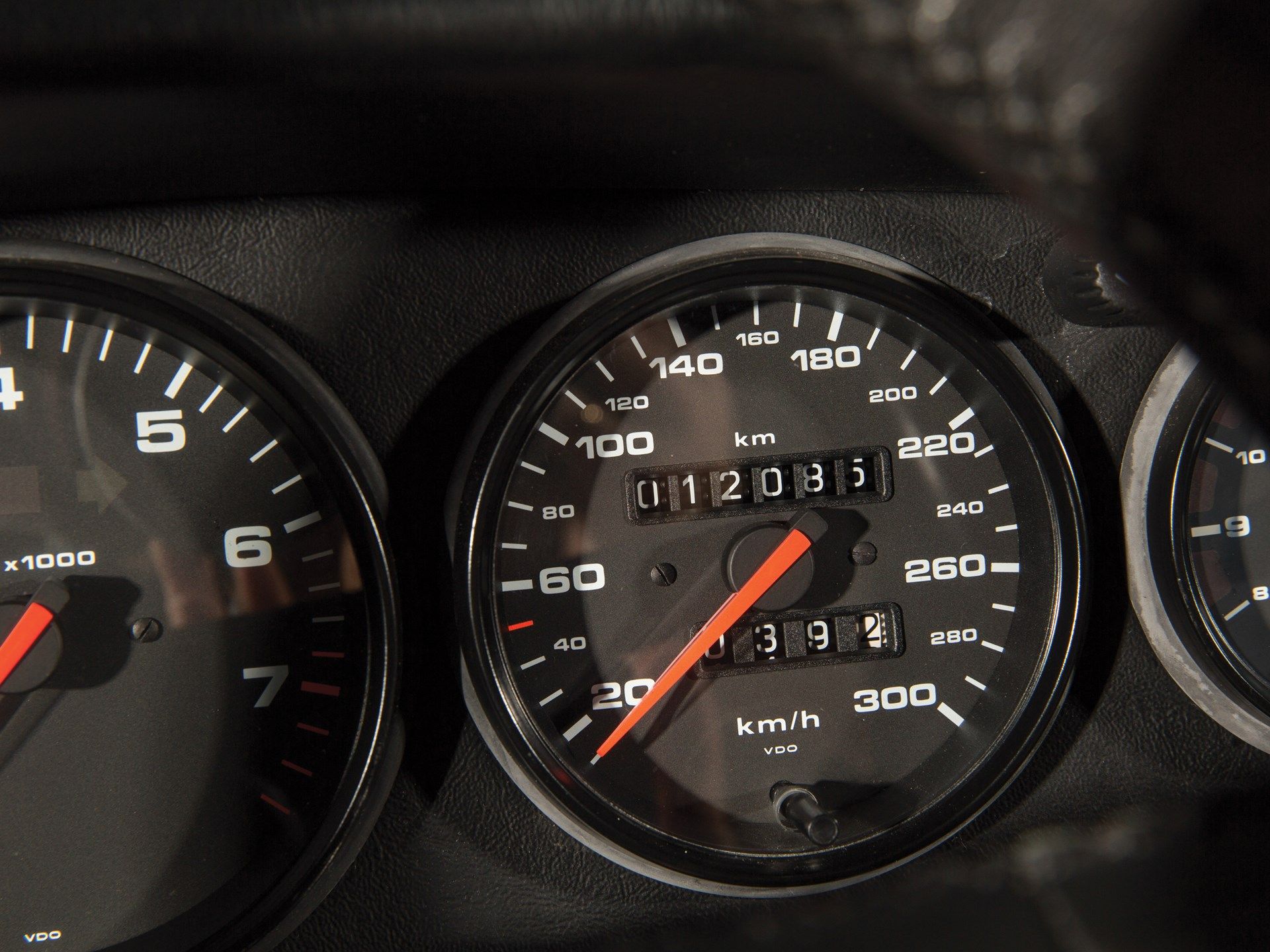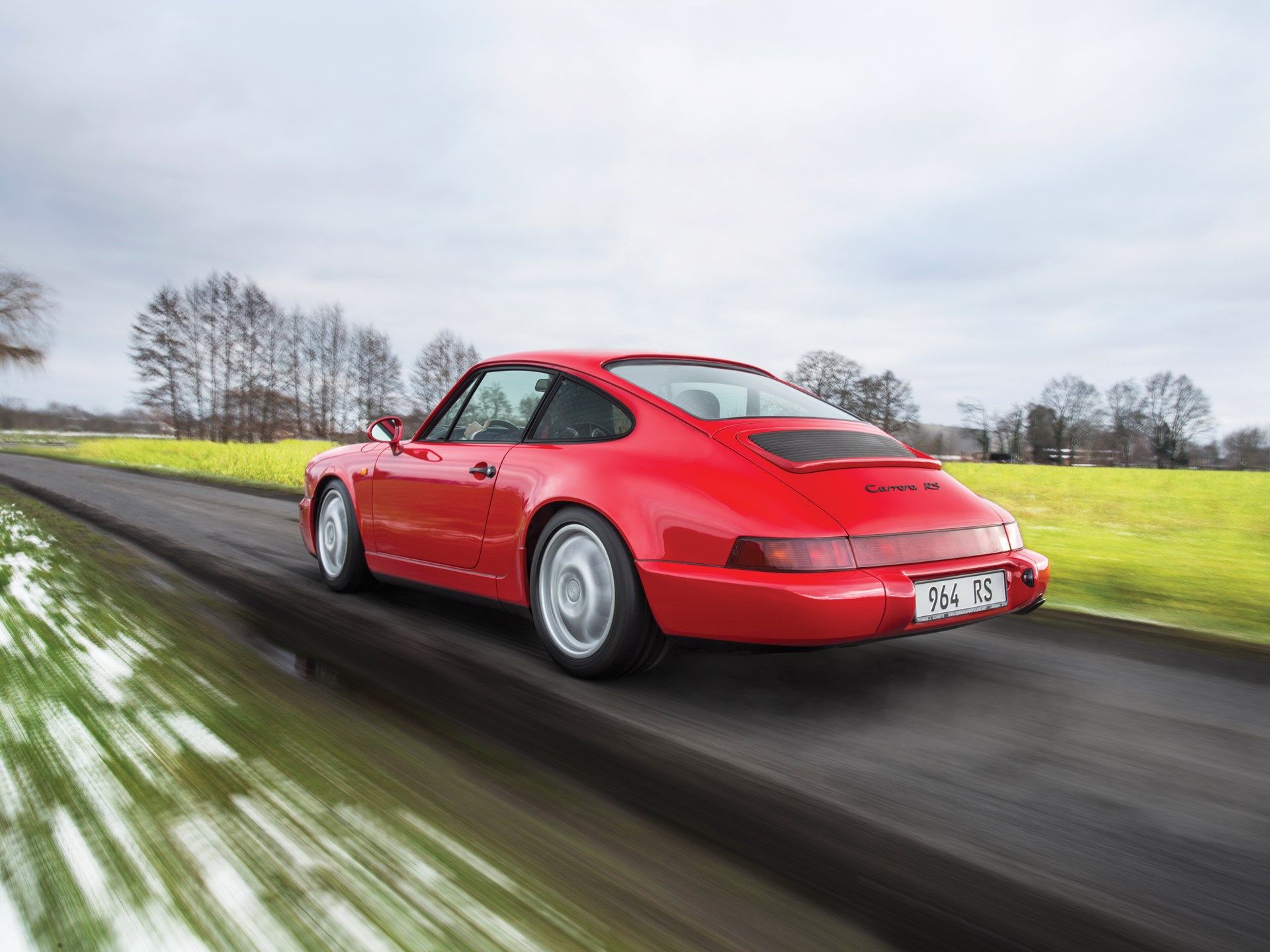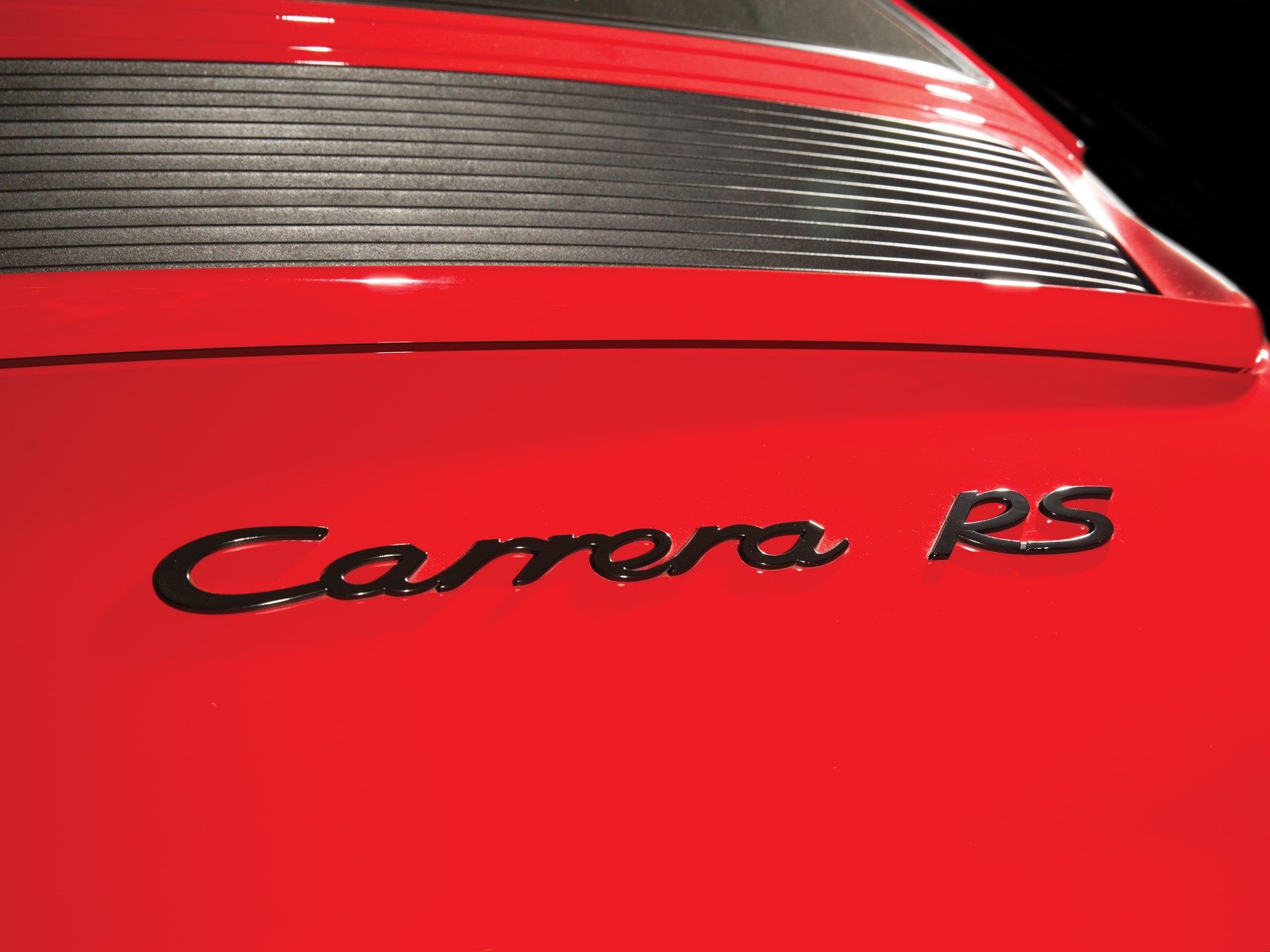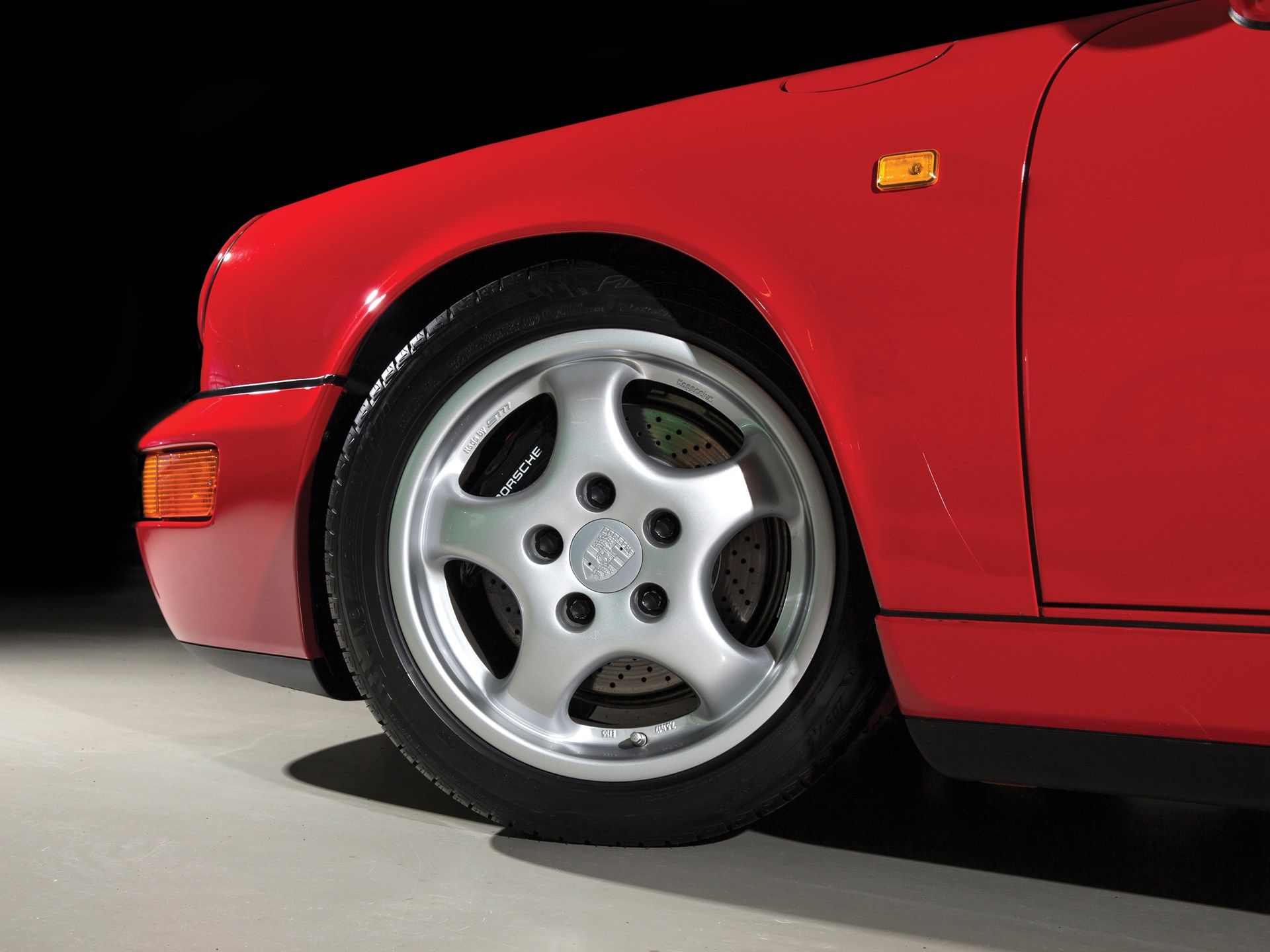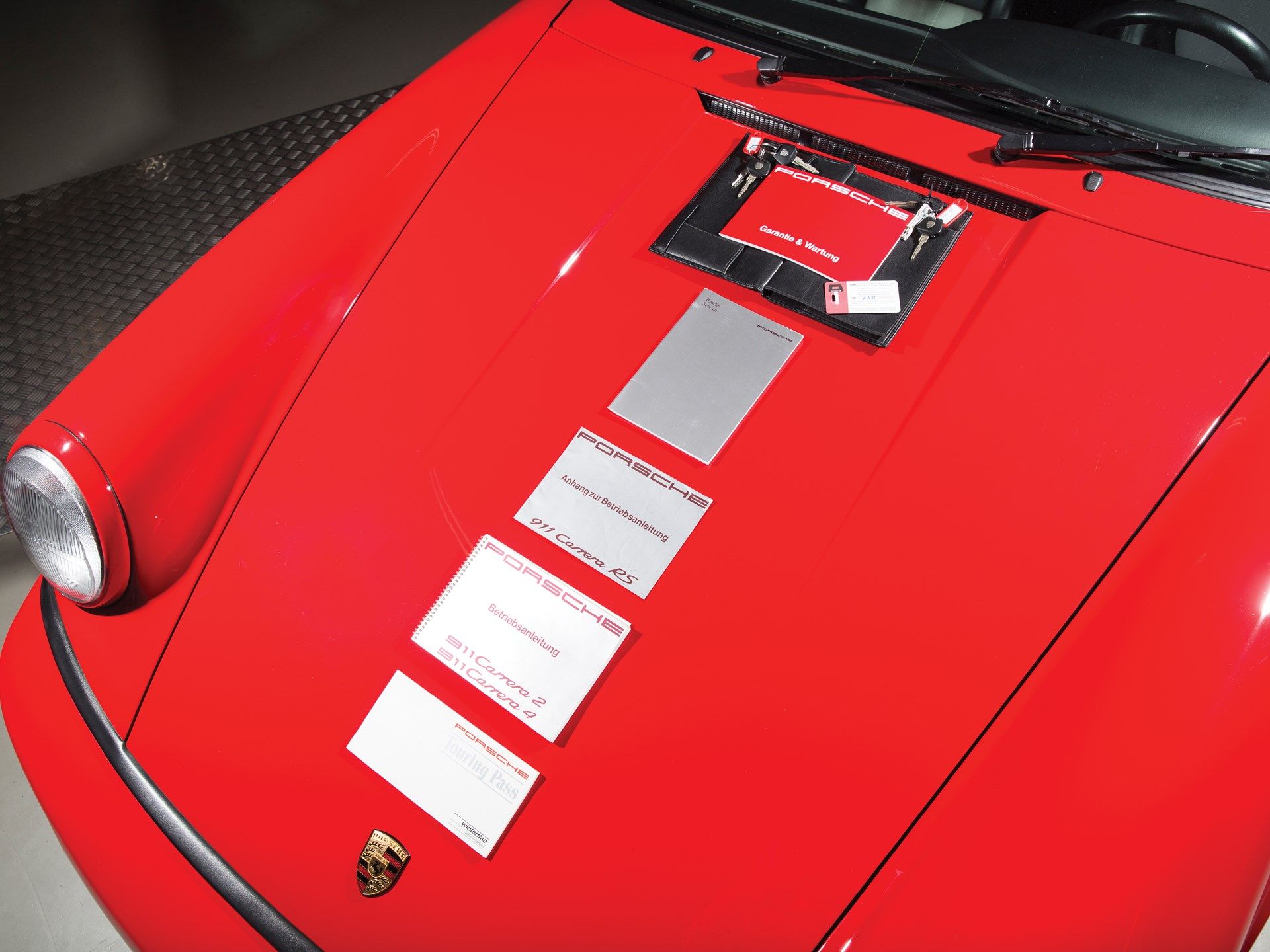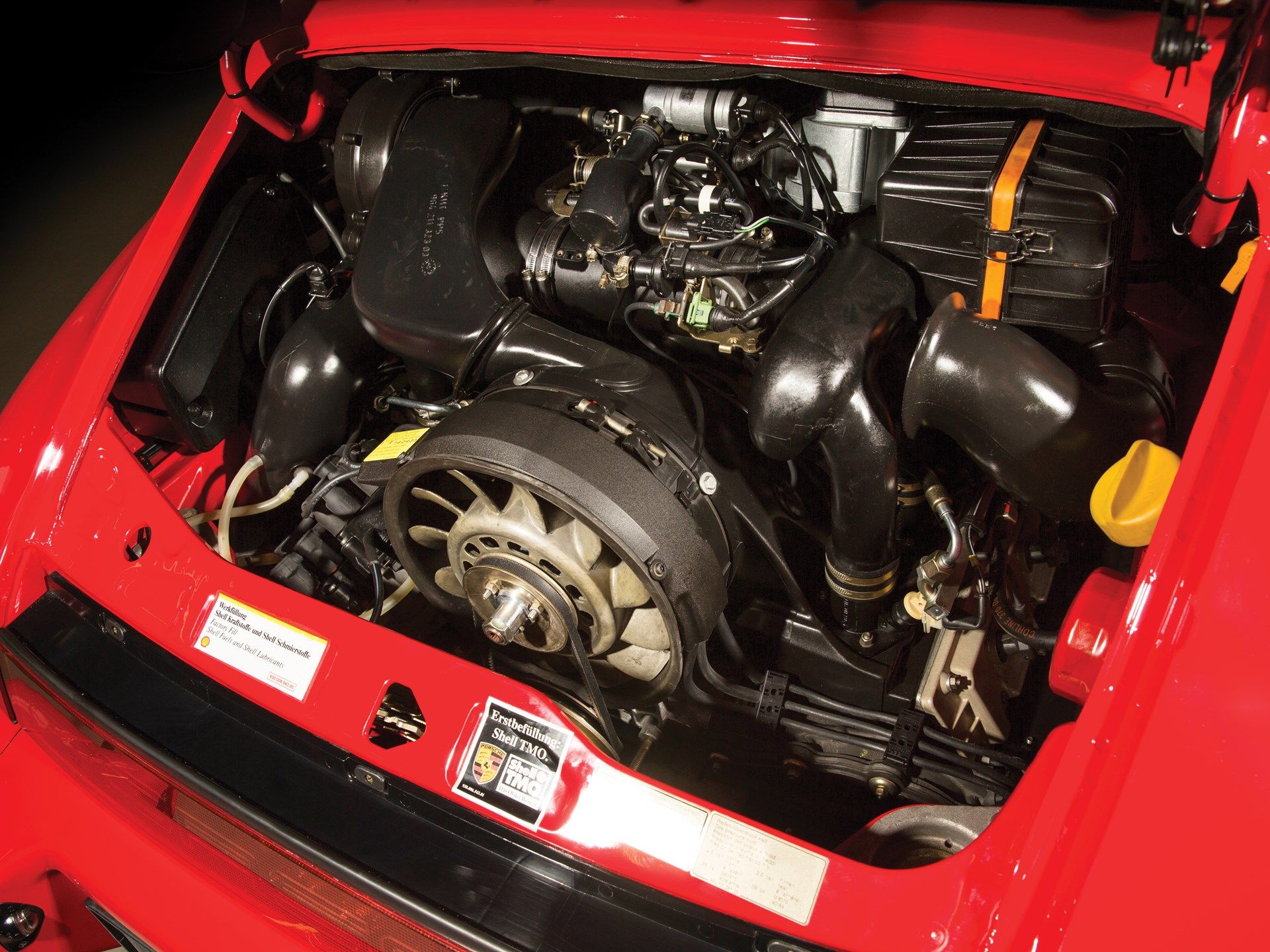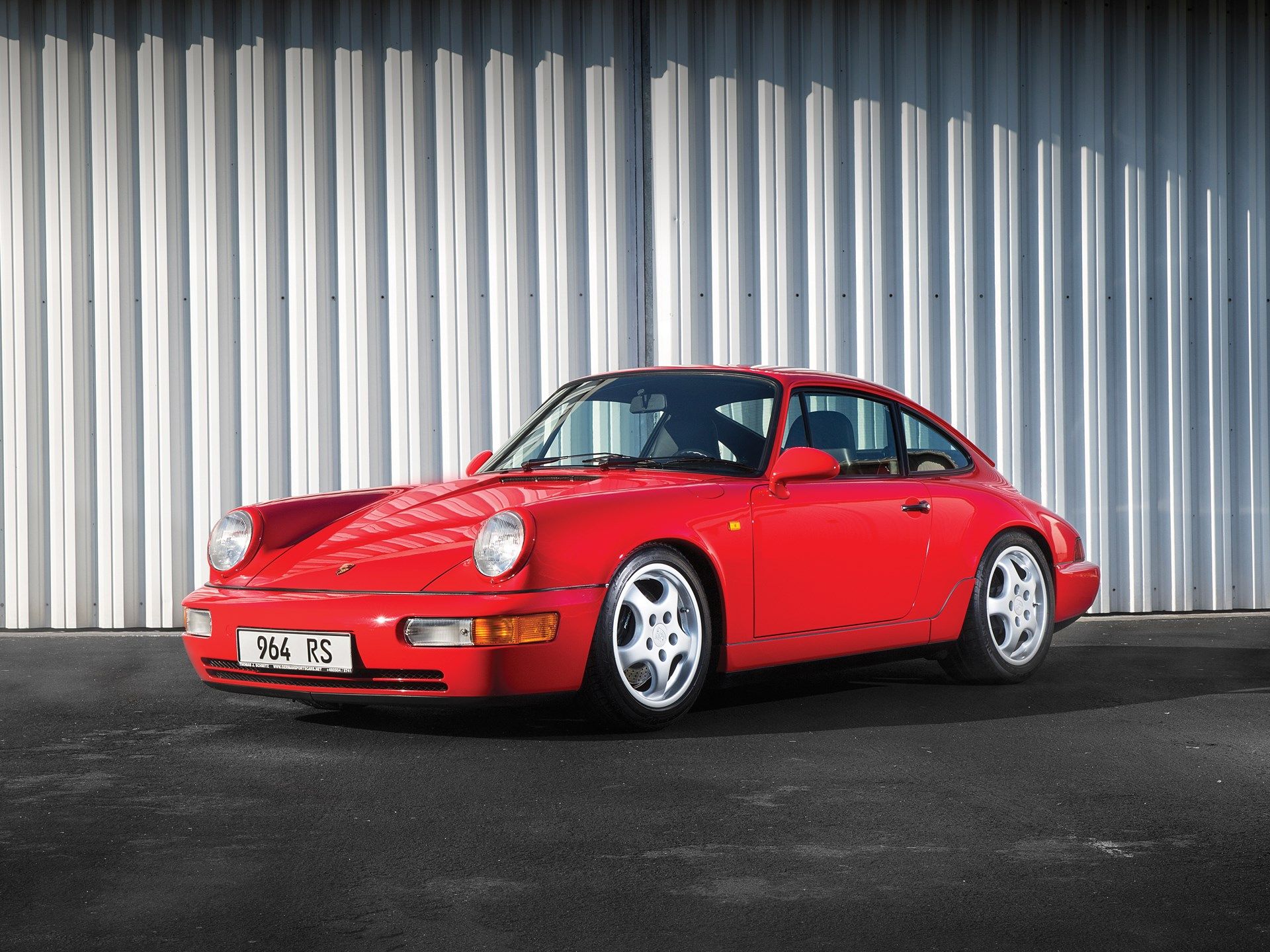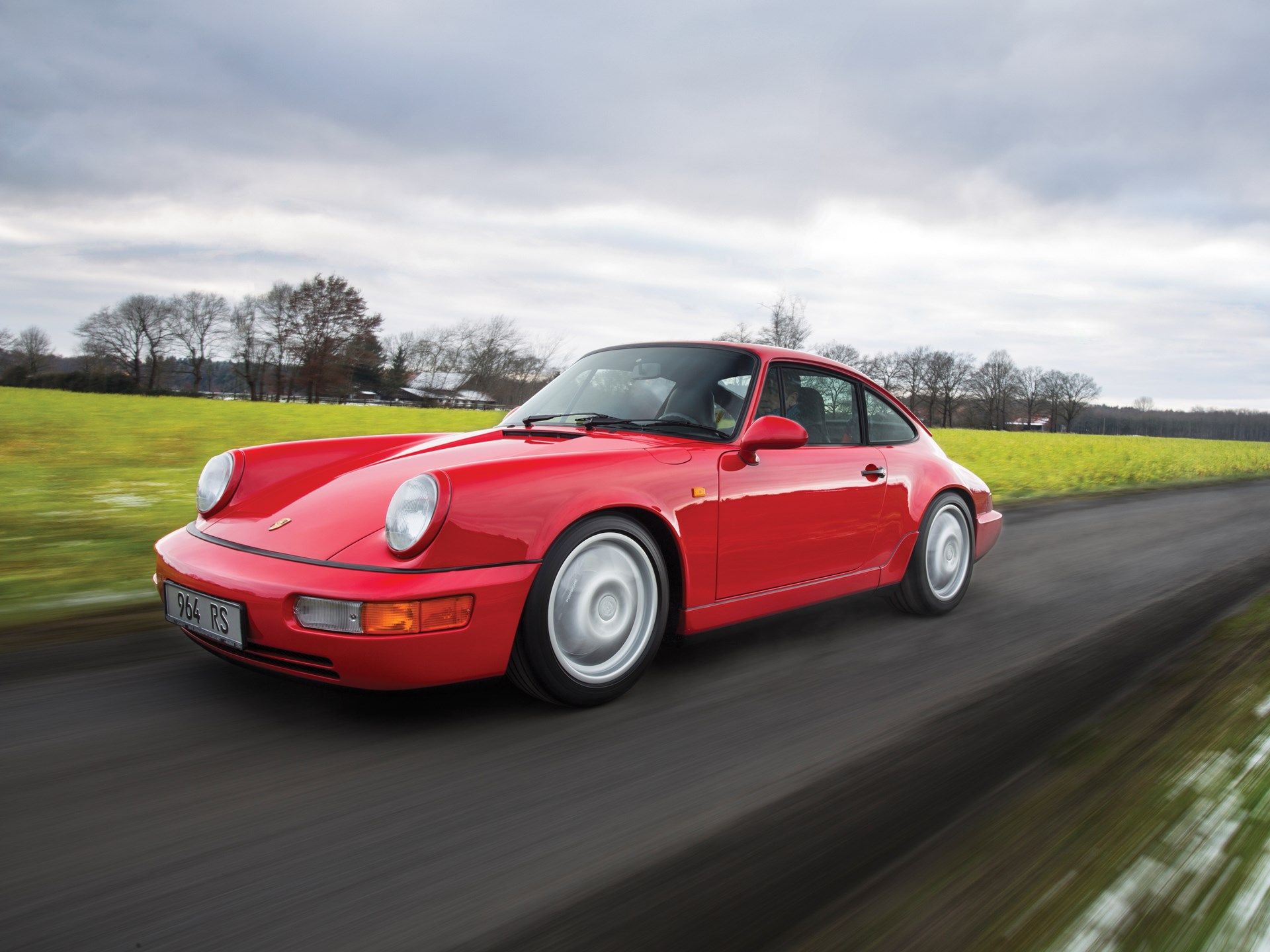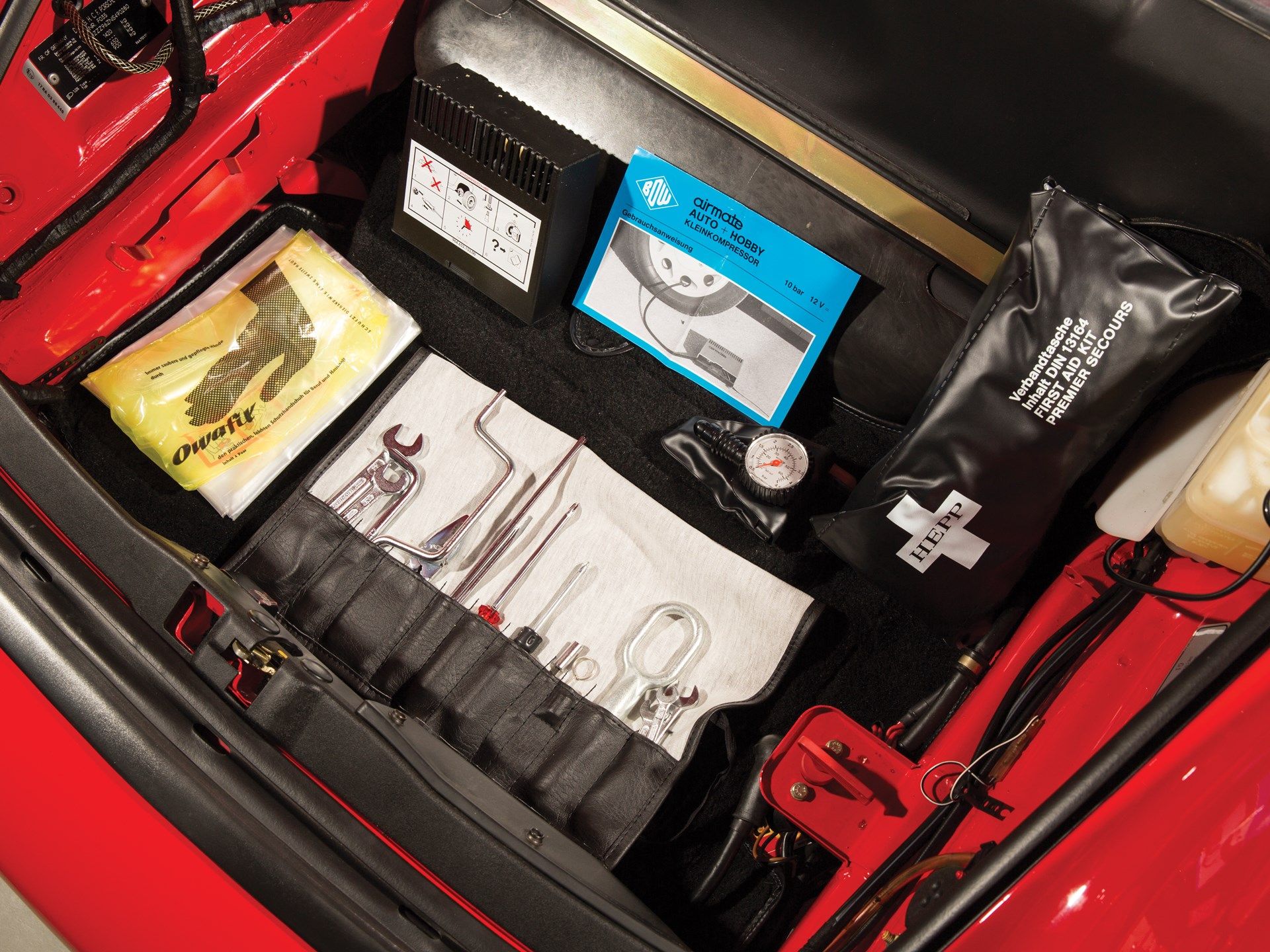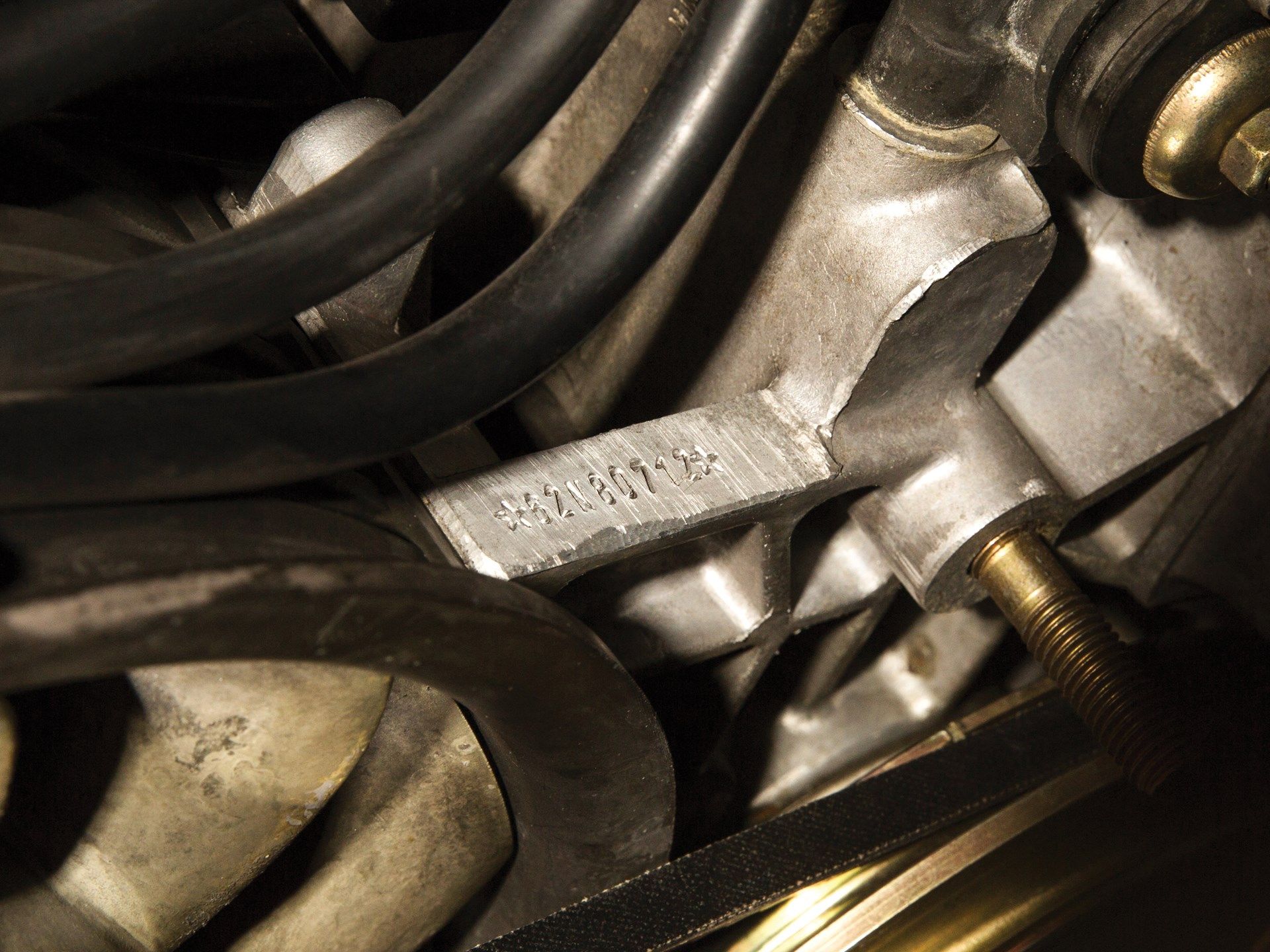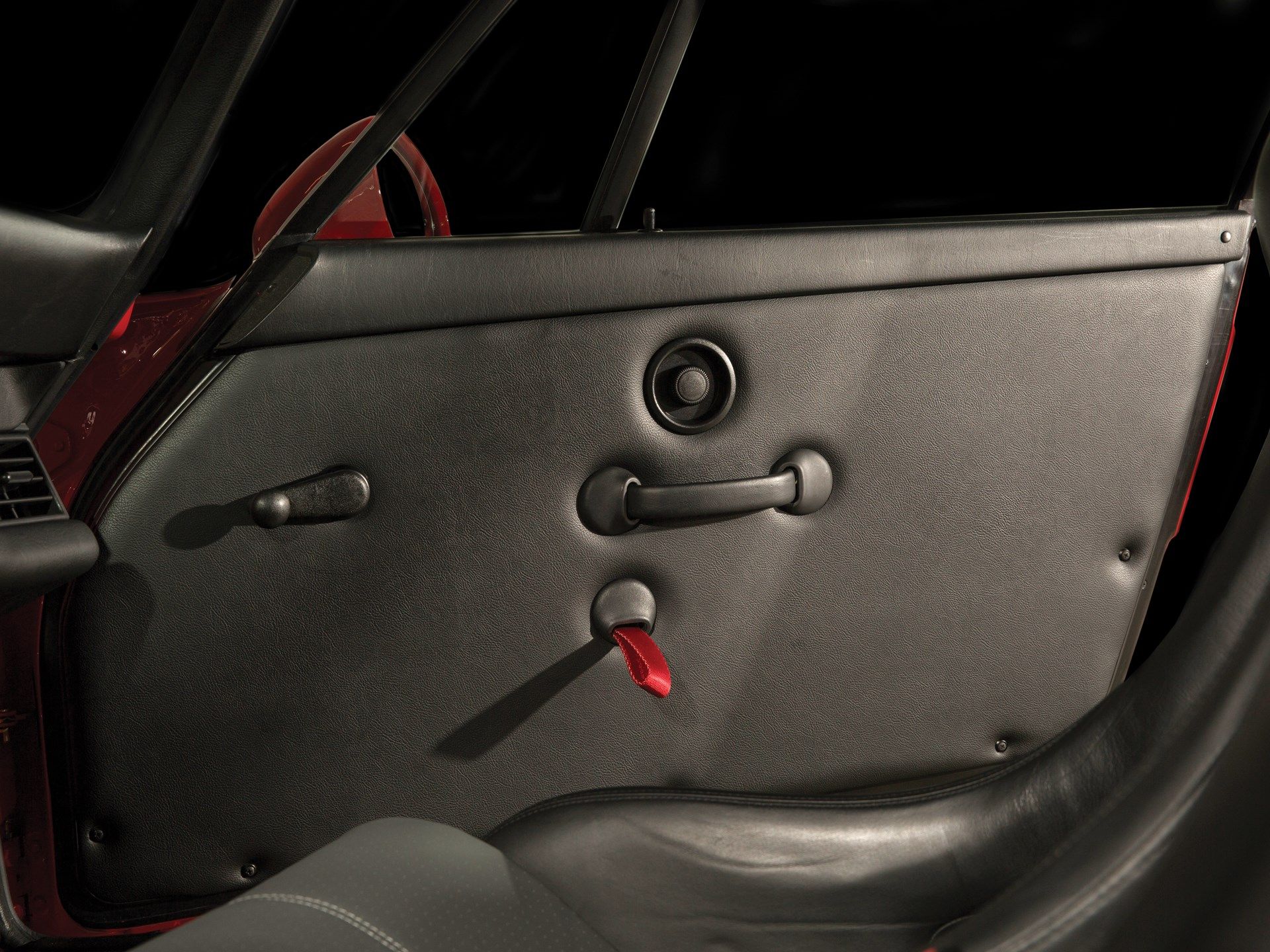The Porsche 911 Carrera RS is an exercise in reducing a formula to its purest form. It was built as a lighter, faster, and more powerful version of the 964-generation Carrera 2 and it stands as a spiritual successor of the magnificent 911 Carrera 2.7 RS from the early ‘70s.
The Benjamin Dimson-penned Porsche 911 (964) debuted in 1989 and featured a rounder body shape in tune with the times which was a clear, but not profoundly radical, departure from the design of the previous 911 that was still tracing its roots back to the original Ferdinand Alexander Porsche-drawn model launched in 1963.
For 1992, Porsche launched the Carrera RS in Europe which was, in essence, a road-legal version of the Carrera Cup racing cars. This single-make series was on the bill of the Formula 1 World Championship weekends as support races in between F1 sessions.
The 911 Carrera RS never officially made it across the Atlantic and into the U.S. market. With that being said, 45 cars that were meant to be used in a Carrera Cup U.S. series that never materialized did trickle down to dealerships and were quietly sold in 1993 in the shadow of the RS America which deserves its own review as it isn’t identical to the European RS.
1992 Porsche 911 Carrera RS
- Make: Array
- Model: 1992 Porsche 911 Carrera RS
- Engine/Motor: flat-6
- Horsepower: 260 @ 6100
- Torque: 275 @ 5600
- [do not use] Vehicle Model: Array
1992 Porsche 911 Carrera RS Exterior
The Porsche 911 had gone without a significant visual makeover for almost 15 years by the time the 964 dropped in 1989. It arrived as a sleeker and rounder interpretation of the already classic 911 shape and incorporated some production firsts on the technical side of things.
The Carrera RS was unveiled at the Geneva Auto Show for the 1992 model year. Aesthetically-speaking, it was pretty much identical to the AWD Carrera 4 and the RWD Carrera 2, although the Cup 1-style wheels made it stand out, coupled with a lower stance.
Up front, the 964 RS looks docile, Porsche didn't bother to fit it with a more aggressive front bumper. This came later with the more ludicrous RS 3.8 which had a big wing in the back and a lowered nosecone with winglets on both corners. But the 964 doesn’t, and it’s for the better. It looks like a sleeper made that way from the factory.
The main differentiator between the 964 and the classic 911 is comprised of the bumpers which are seamlessly incorporated into the body line. The front bumper features two narrow and elongated air intakes just below the number plate while the indicators and fog lights sit on the corners of the bumper. Porsche also offered an NGT package for the Carrera RS which shed off some more weight and, what is more, the fog lights were replaced by two body-painted inlets.
The twin headlights sit lower than on the previous 911 although their “tunnels” are still higher than the receding hood line. The front hood itself has a massive air vent just aft of the windshield to aid interior cooling.
The profile of the Carrera RS looks simple, combining the old-fashioned line with some touches of modernity. The first thing you notice is that this 964 sits lower than your average Carrera 2 or Carrera 4. Indeed, this model sits 1.6 inches closer to the ground than the standard versions thanks to a sporty suspension that was judged as being too stiff back in 1992, but you get used to it and it’s still usable as a daily driver.
The five-spoke magnesium 18-inch wheels are buckled in Yokohama rubber and have become highly popular among Porsche fans over the years.
The rear of this 964 is barely letting any clue out about how spirited it can go.
The engine hood is the only party piece. It features the “Carrera RS” nameplate with black letters and also an electronically-moveable spoiler that lifts when the car exceeds 50 mph but, otherwise, sits flush with the rear hood and acts as an air vent. As mentioned before, the Carrera RS 3.8 came with a fixed rear wing that offered permanent downforce.
1992 Porsche 911 Carrera RS Exterior Dimensions
|
Wheelbase |
89.4 inches |
|
Overall Length |
168.3 inches |
|
Width |
65.0 inches |
|
Height |
52.0 inches |
1992 Porsche 911 Carrera RS Interior
The interior premises of a Carrera RS are religiously bare to save weight. You get no A/C, electric windows, power steering, front armrests speed control, or the rear seats. The original seats were also binned and replaced with tasty leather-wrapped bucket seats that lack most seat controls. The sound insulation inside is almost completely dumped as well as is the case with the radio.
What do you get, then? Well, you could re-equip your RS with an air con and even a radio but, let it in its barest form and you’ll face a neigh-on empty dashboard covered in leather.
The RS doesn’t have a center console, so the shifter sticks right out of the transmission tunnel with the handbrake just between the tri-color seats. The floor-hinged pedals are angled towards the center of the car but that isn’t a reason of alarm for taller folks – they are even more ‘askew’ on the 993.
The interior door panels are also extremely basic.
1992 Porsche 911 Carrera RS Drivetrain
There’s no magic going on underneath the body of a 964 RS but, in fact, there’s a whole lot of magic going on there. What I mean is that there are no electronic aids, even the steering is unassisted, and the engine is of the old N/A air-cooled way – but with Bosch Motronic engine management and multipoint fuel injection.
That SOHC M64/03 engine is blissful. It’s fitted with a light single-mass flywheel which weighs only 12 pounds and was one of the key perpetrators of the power gain over the standard 964. Being naturally-aspirated, you have to rev it to get things going and that’s just the beauty of it. The engine is linked to a 5-speed steel synchromesh gearbox with closer ratios known as the G50/10. The RS is fitted with an asymmetrical limited-slip differential to make things easier coming out of corners.
How does all that work? Well, Motoring Search had this to say following their road test: “The mechanical clatter of its flat-six hardens to a visceral snarl as the revs rise. Below 4,000rpm it feels merely quick – then all hell breaks loose and it explodes to the 6,800rpm redline faster than you can grab the next gear. It’s uncouth, uncompromising and utterly fantastic.”
CAR Magazine, after a massive Porsche-only test, went on to state that “the RS is not a fast car, feeling surprisingly leisurely at low rpms and never really pulling with the spine-tingling vim that you might expect, but it sounds fantastic and handles so sweetly that you stop worrying about outright pace and start focussing on carrying speed, on listening to what the chassis is telling you in the least convoluted terms.”
Richard Hammond, a 911 devotee through and through, also had a go in one during his TG days and was over the moon talking about the machine. “The lighter flywheel and closer ratios mean it barks like an angry dog and hauls through those close ratio gears just as aggressively.
You have to thank the track-focused suspension for the improved road holding and that visceral feel as the wheels vigorously communicate to you everything that goes on down below. The suspension, independent all around with MacPherson struts up front, has stiffer springs, shock absorbers, and adjustable stabilizer bars. Hefty ventilated discs sit behind each of the four wheels.
1992 Porsche 911 Carrera RS - specifications
|
Engine |
H-6, 3.6-liter, 2V, Rear, longitudinal |
|
Power |
260 horsepower at 6,100 rpm. |
|
Maximum speed |
162 mph |
|
Acceleration 0 - 60 mph |
5.4 sec |
|
Minimum volume of trunk |
3.17 cubic feet |
|
Torque |
275 pound-feet at 5600 rpm |
|
Fuel System |
Multi-point injection |
|
Bore x Stroke |
100 mm x 76.4 mm |
|
Compression ratio |
11:3 |
|
Drive wheel |
Rear-wheel drive |
|
Number of Gears |
5-speed, manual, steel synchromesh with closer ratios |
|
Front suspension |
Helical spring |
|
Rear suspension |
Helical spring |
|
Front brakes |
Ventilated discs |
|
Rear brakes |
Ventilated discs |
1992 Porsche 911 Carrera RS Pricing
The 964-generation 911 Carrera RS has garnered a big following over the years and, as the second-to-last generation to feature air cooling, it’s highly sought after. Add to this the fact that it’s incredibly involving and fulfilling to drive and that less than 2,300 units were ever built to understand why you have to dip into six-figure sums to buy one.
The car we see in these images, painted in a striking Guards red exterior color, hit the block during the 2016 RM/Sotheby’s sale in Monaco.
It all depends on the mileage, particular configuration, and history. Many RSes are used as track day machines so those are somewhat more worn out and may sell for less in comparison with garage queens that barely covered 10,000 miles in all of their +25-year life.
1992 Porsche 911 Carrera RS Competition
Ferrari F355 Berlinetta
The F355 Berlinetta was the F348s replacement and was a major step in the right direction for Ferrari, a company that was thought to have derailed from its goal of creating pure and fast driving machines. The Mondial and the 348 (even in TS trim) tattered that image but the 355 showed the world that Ferrari still got it.
It debuted in 1994 and, with over 11,000 units sold until 1999, it was a success. It featured a steel monocoque with a tubular steel rear sub-frame that kept the dry weight just below the 3,000 pounds mark. It came with Pirelli rubber that wrapped around the 18-inch rims and was equipped with power steering although a manual rack and pinion setup was available by request.
The F355 was powered by a mid-longitudinally-mounted 3.5-liter DOHC V-8 engine with 5 valves per cylinder. Max power output was quoted by Ferrari as 375-horsepower at 8,250 rpm and 268 pound-feet of torque at 6,000 rpm. The 6-speed manual gearbox was the standard transmission option although, later, Ferrari offered a flappy-paddle F1-style electro-hydraulic gearbox.
Arguably, the Pininfarina body of the F355 makes it the standout when compared to the Porsche which looks mundane. But the Porsche is closer if not better when it comes to the driving experience. Granted, the Ferrari could be quicker around the track due to the position of the engine and added horsepower and torque.
Read our full review on the 1995-1999 Ferrari F355 Berlinetta
Chevrolet Corvette C4 LT1
The LT1 5.7-liter V-8 engine was available on the C4-generation Corvette between 1992 and 1996 in thee different versions, all deploying 300-horsepower with torque varying between 330 pound-feet and 340 pound-feet. On the Y-body, the LT1 engine had a cast iron block, with aluminum heads
The C4 with the LT1 engine is the closest rival to the Carrera RS from the whole C4 range. The car itself was designed by Jerry Palmer and debuted almost a decade before the launch of the 964 Carrera RS. However, it was still going strong by the early ‘90s.
The C4 moved away from the fiberglass body construction of the C3 with the rear section being made from molded plastics. It was also the first Corvette to had a glass rear greenhouse. As the first “uniframe” Corvette, it came with independent suspension all around, by transverse fiberglass mono-leaf springs, and disc brakes with aluminum calipers. It weighed 3,240 pounds thanks to a proper Grand Tourer interior with the innovative electronic dashboard.
Sadly for Chevrolet, even the ZL1 Lotus-tuned version wasn’t quite bettering a Carrera RS on the twisty bits of a race track, although it could rocket past on the straights.
Final Thoughts
The 964 Carrera RS is a pure driver’s car like only Porsche manages to pull off. It’s light, nimble, not fully planted to the road surface so you get to play a bit, sounds amazing and isn’t flashy. Best of all the worlds? Maybe.
“Think of it as one final celebration of the past before progress marched in,” said CAR Magazine. “It’s a car you’ll ache to spend time with, to learn its quirks and exploit its talents. The buzz of driving it stayed with us many hours after we reluctantly handed back the keys,” is how Motoring Research put it. All in all, it’s bucket list stuff!
Further reading
Read our full review on the 1994 Porsche 964 Speedster.
Read our full review on the 1995 Porsche 993 Cup 3.8 RSR.

